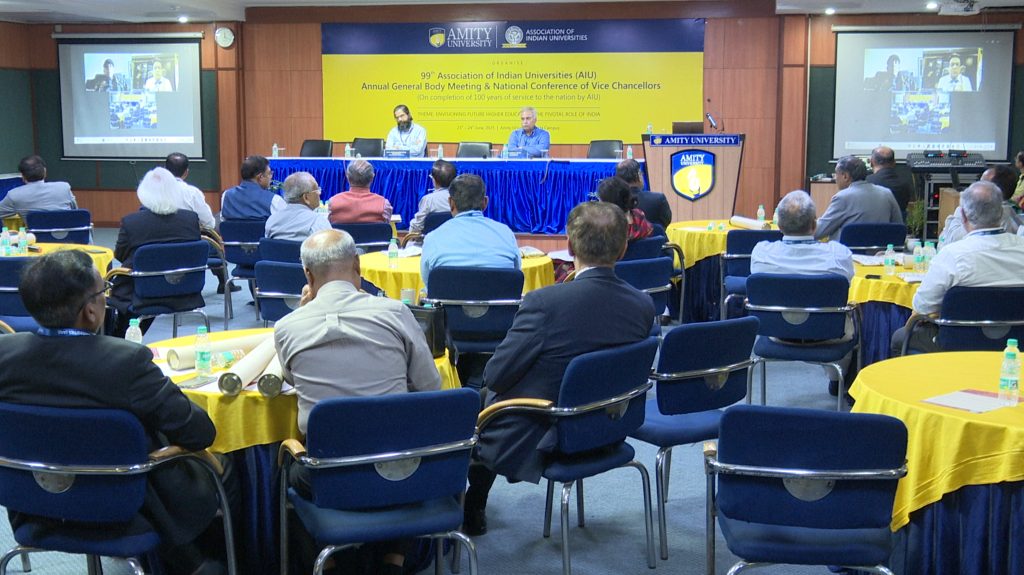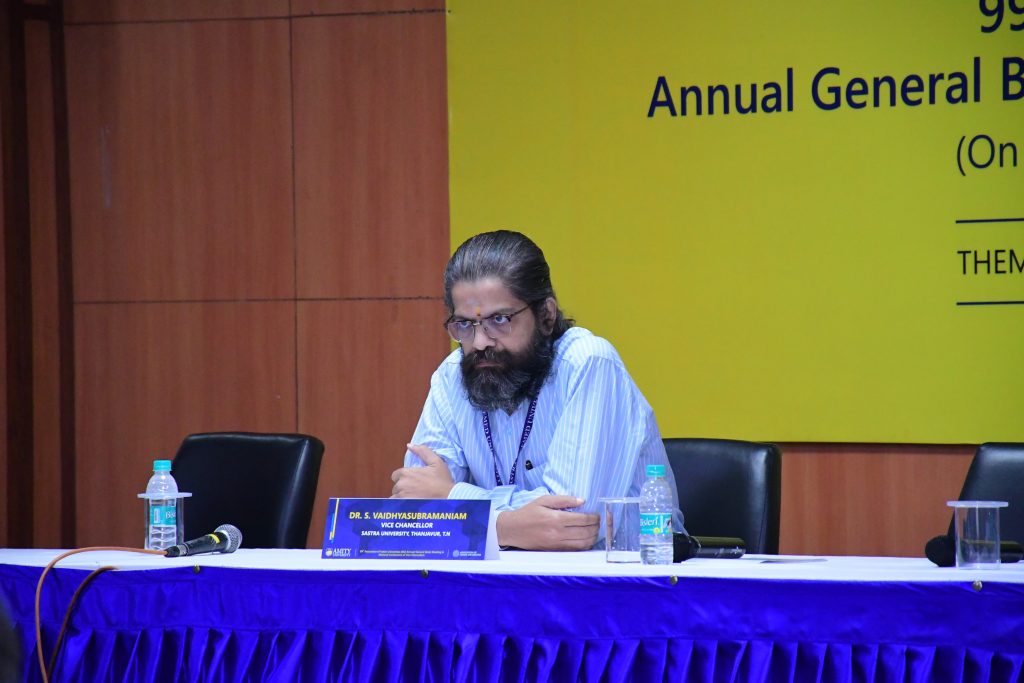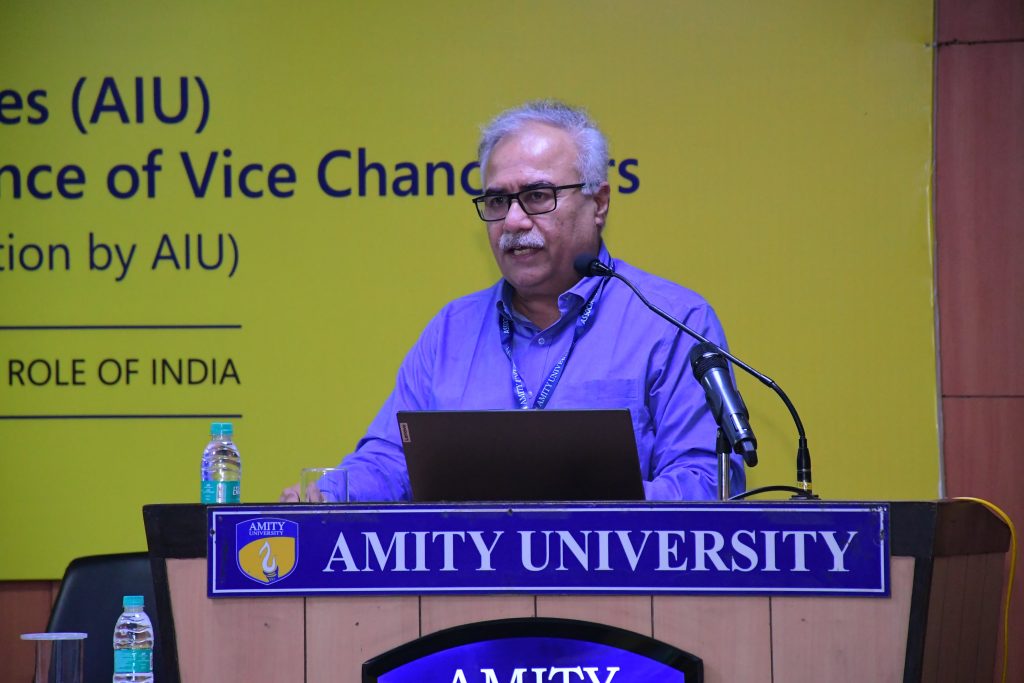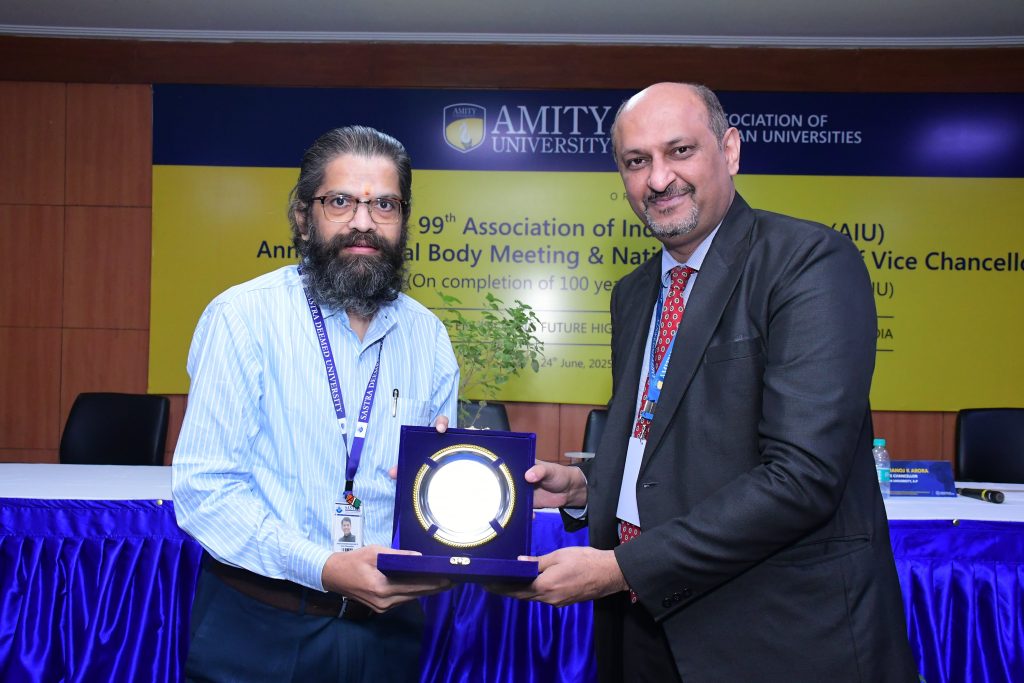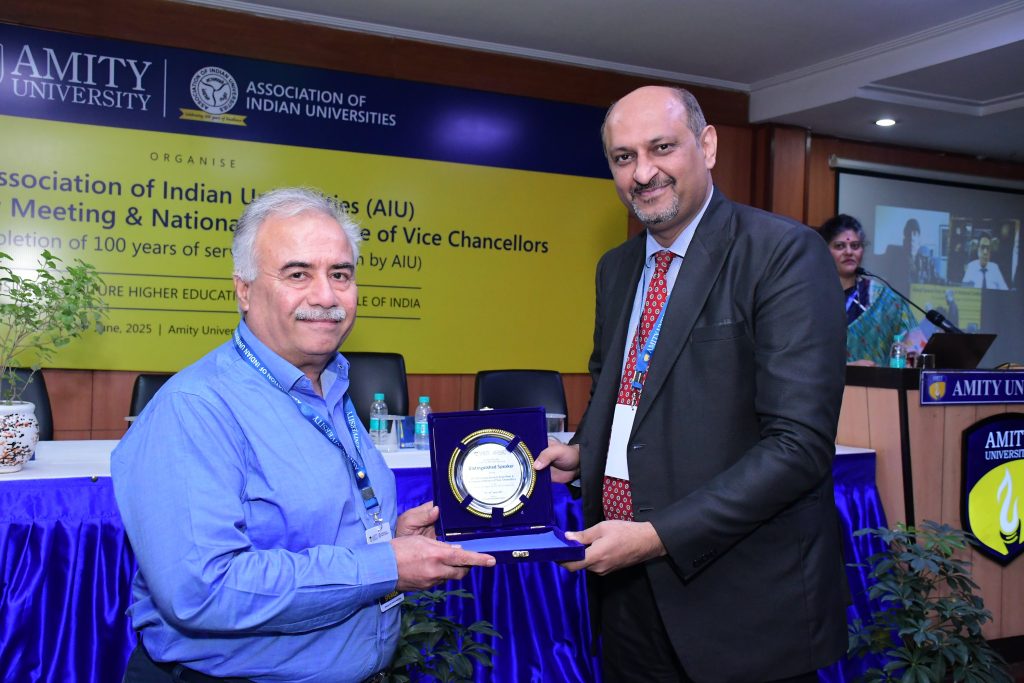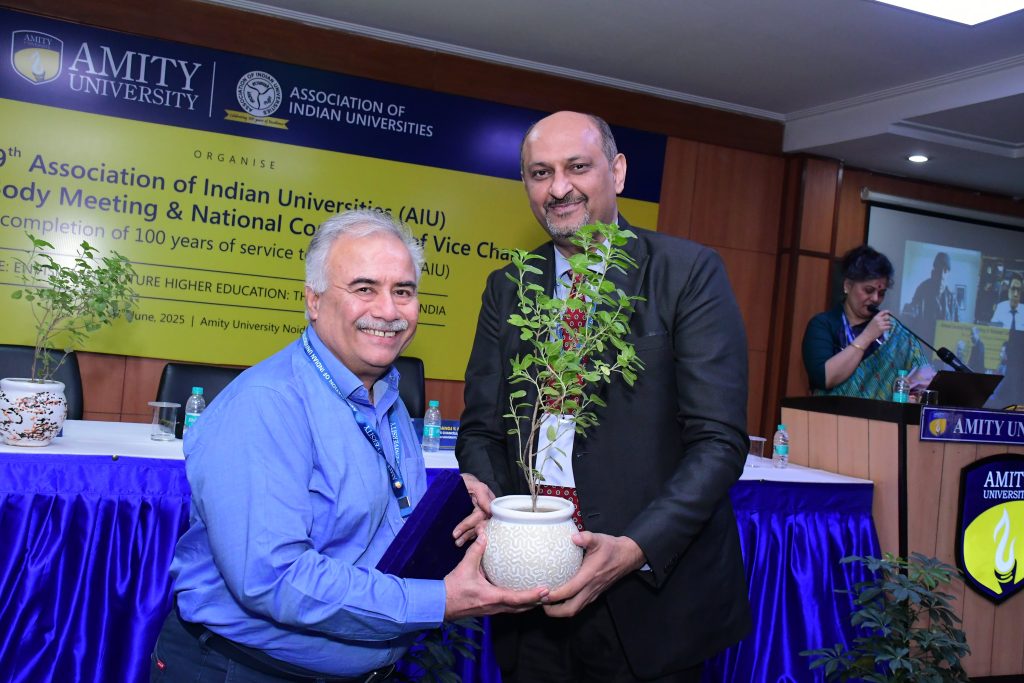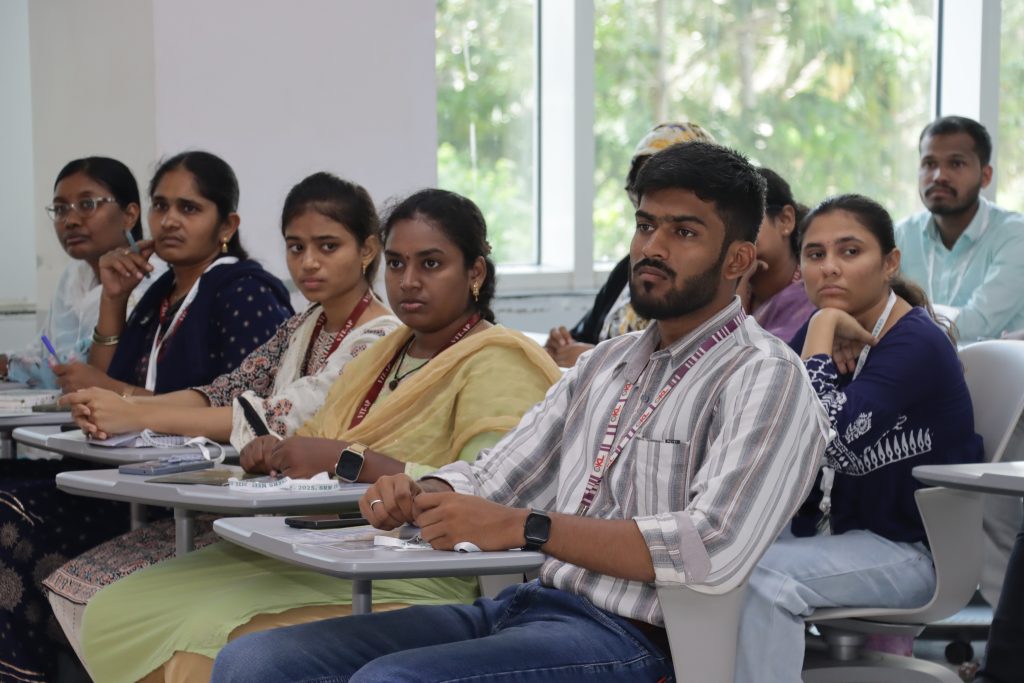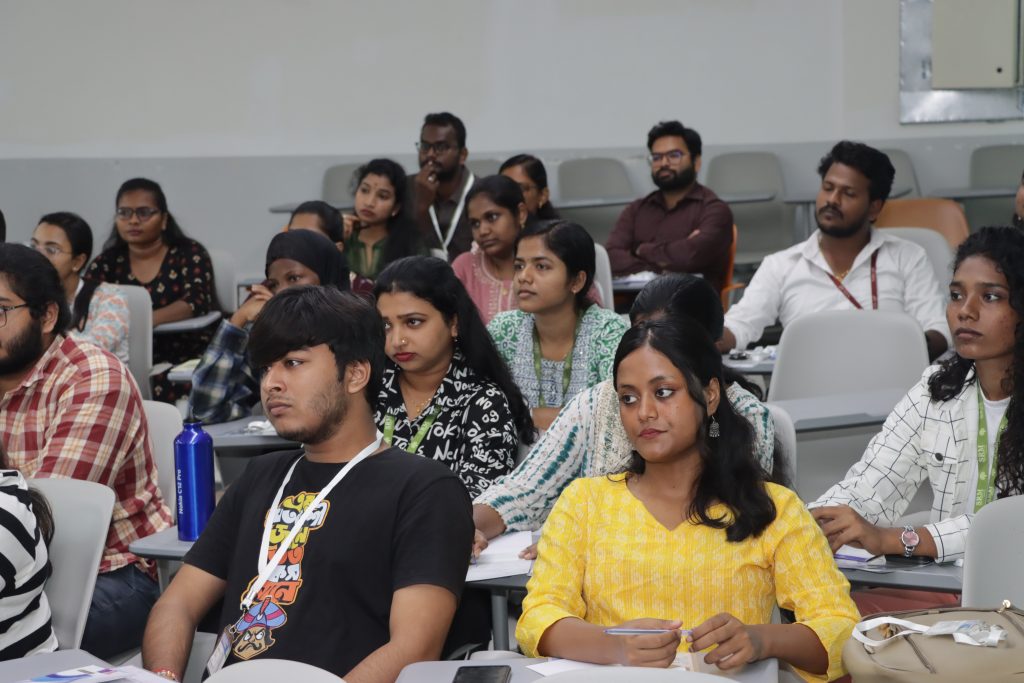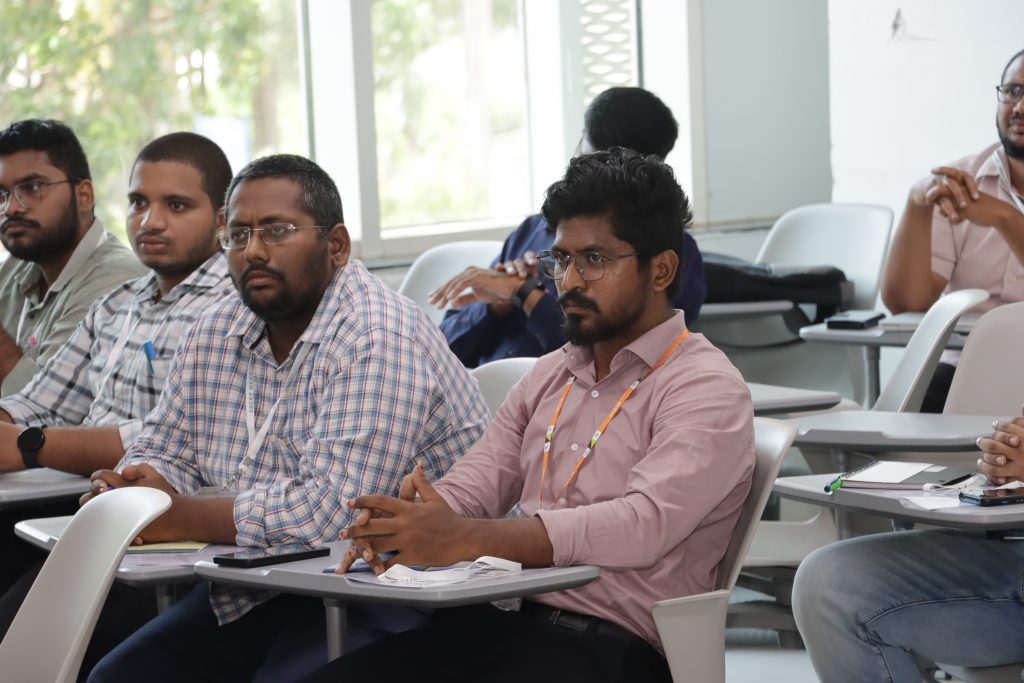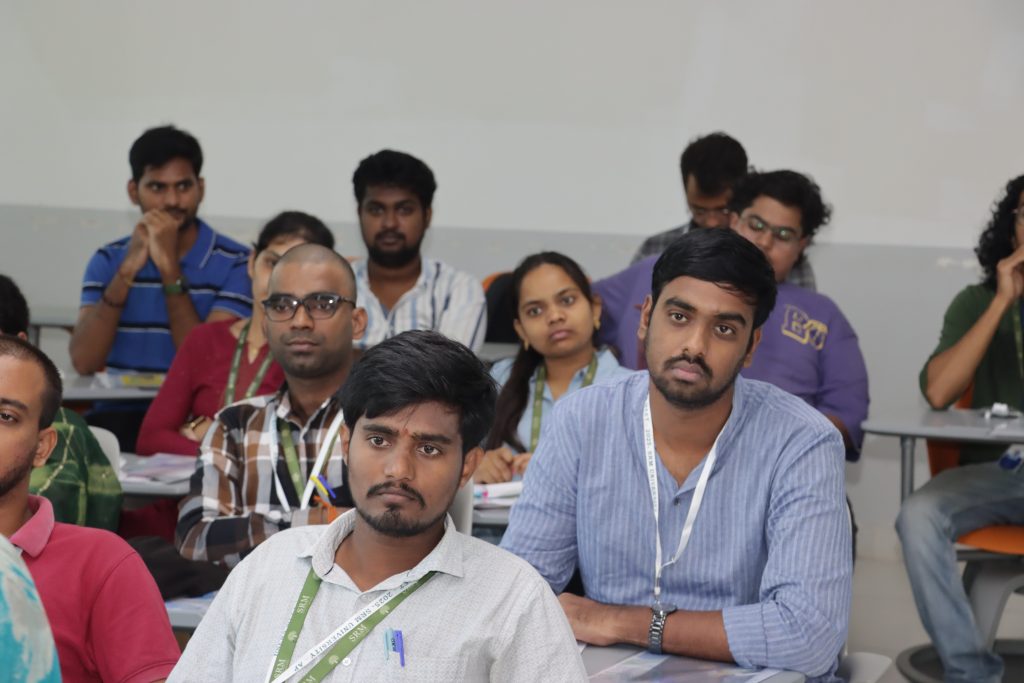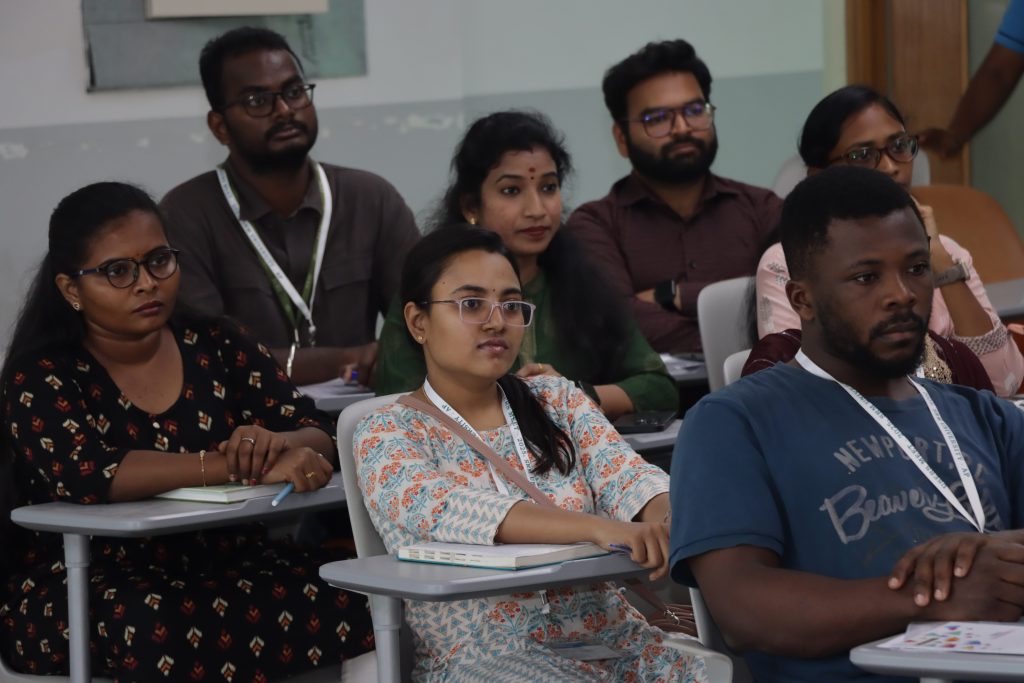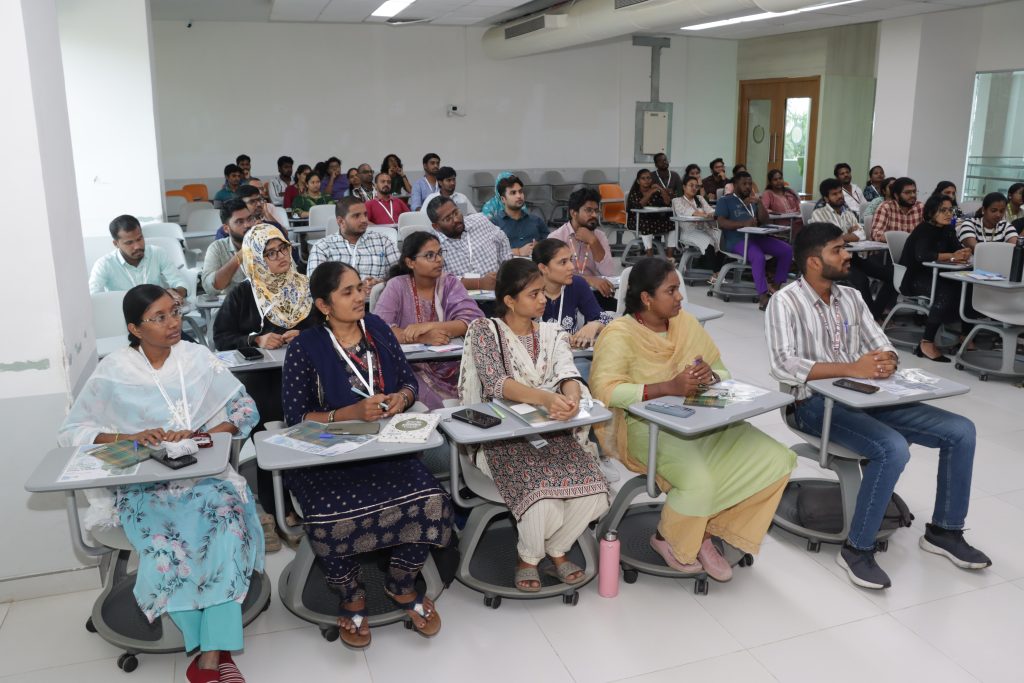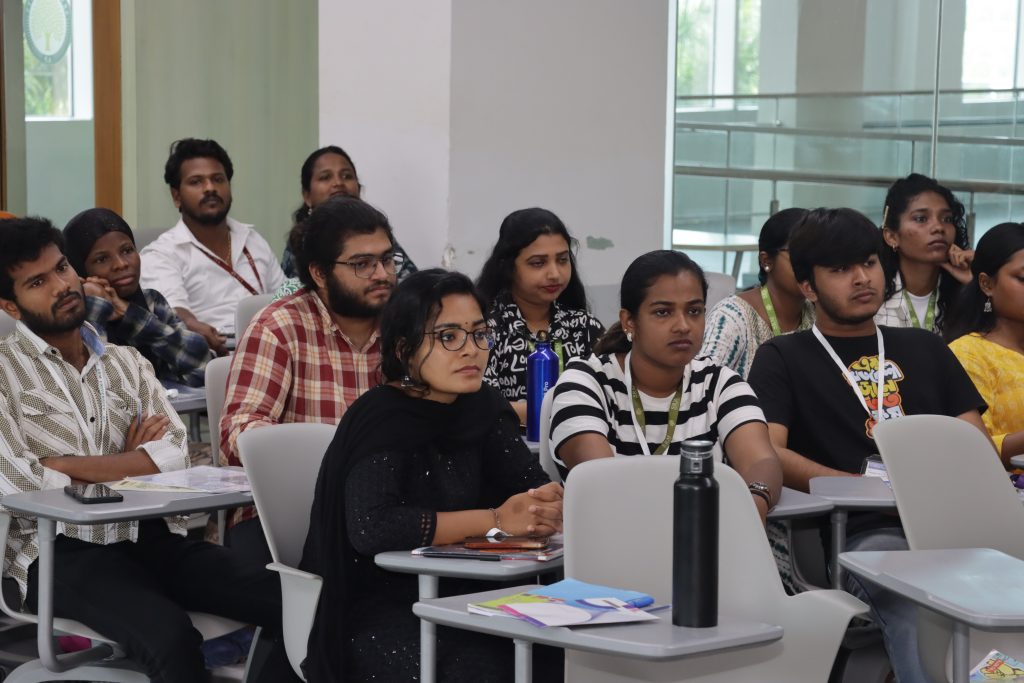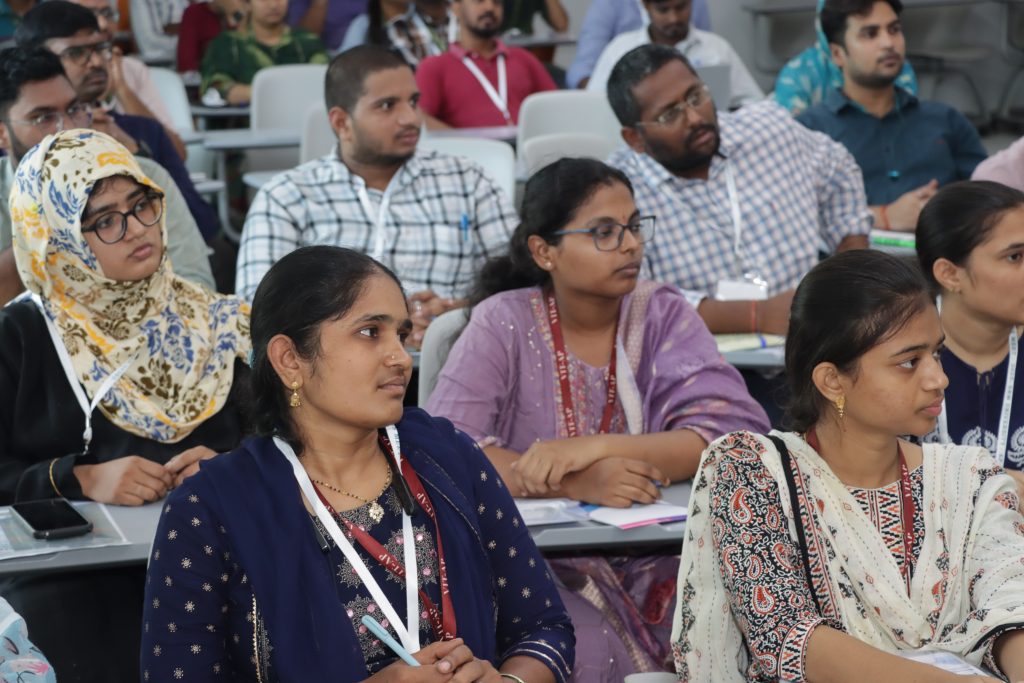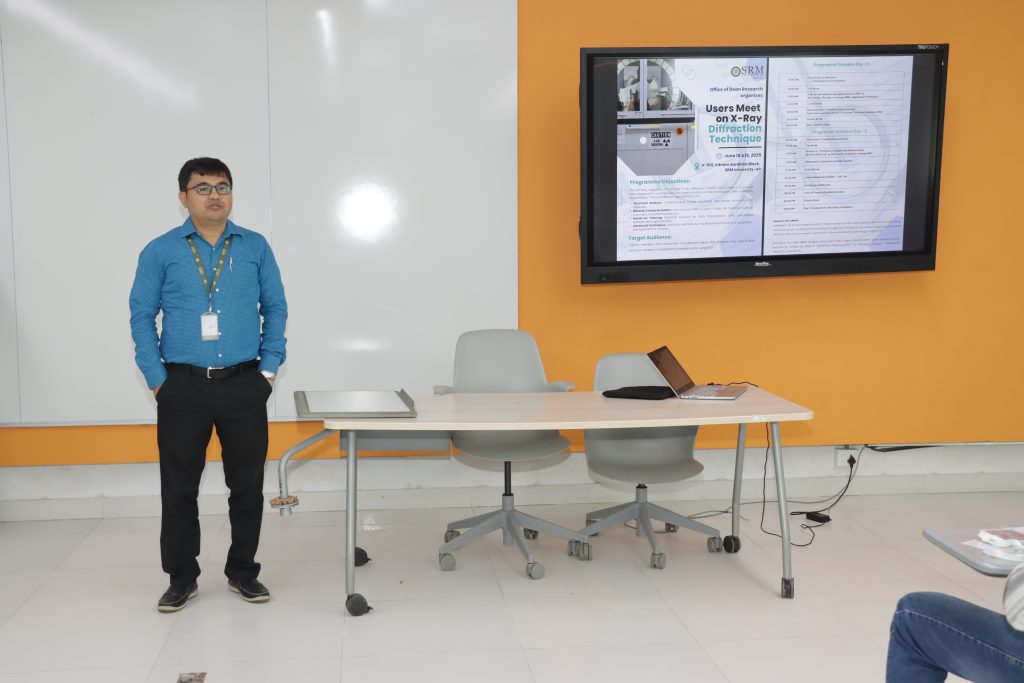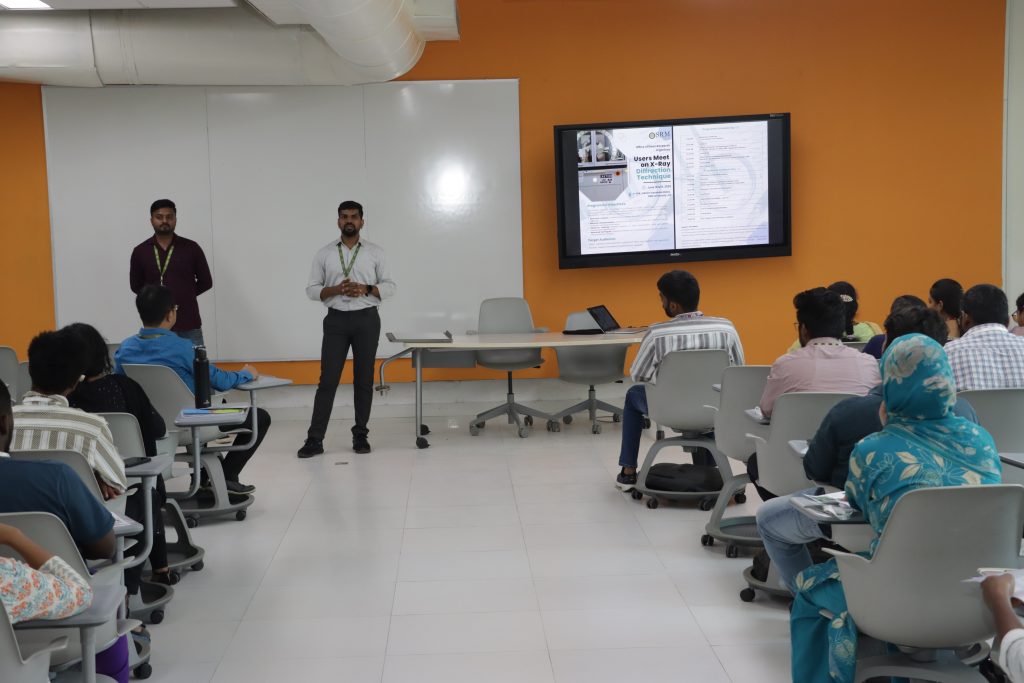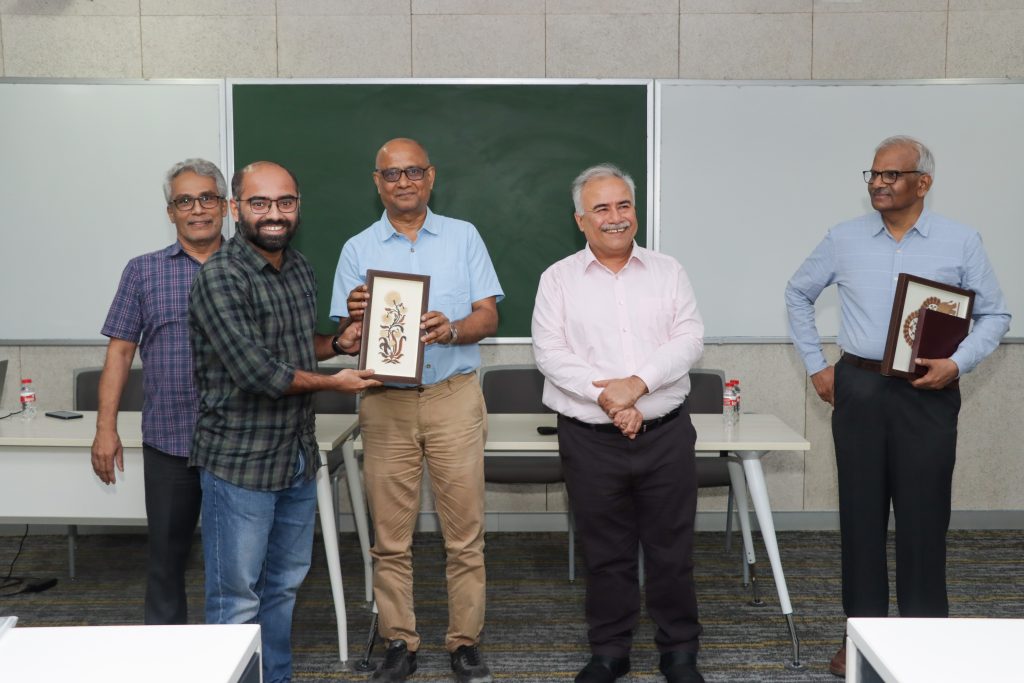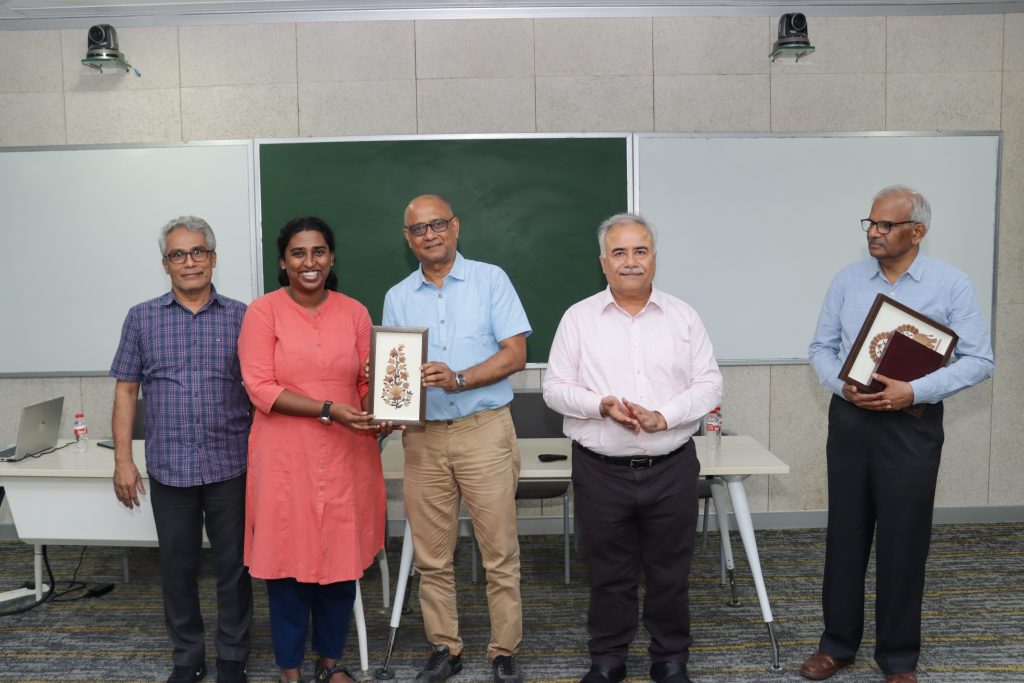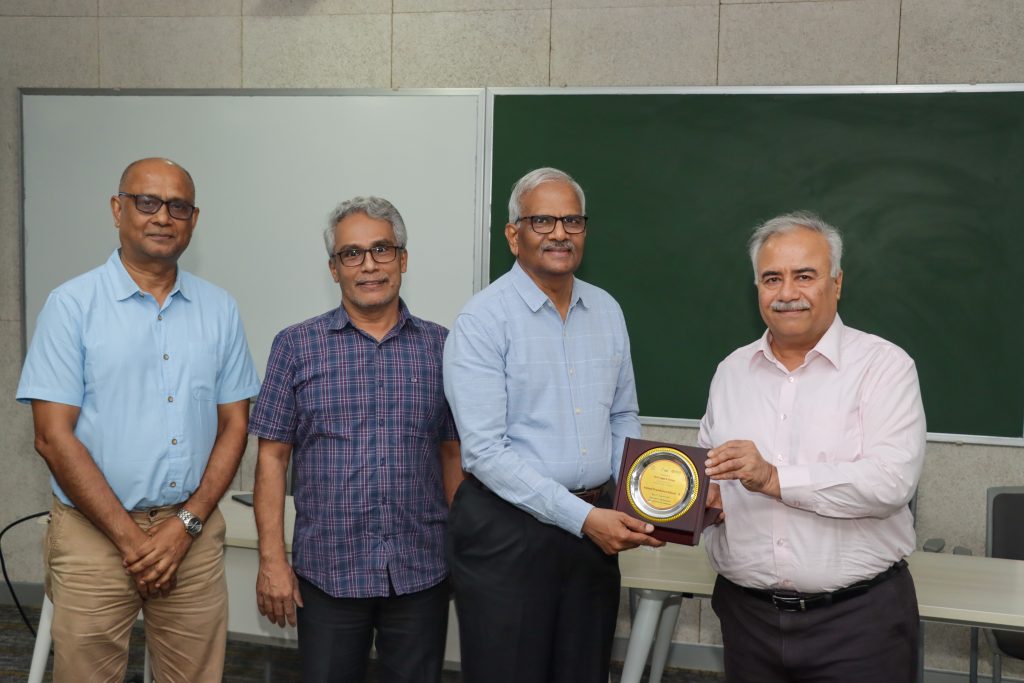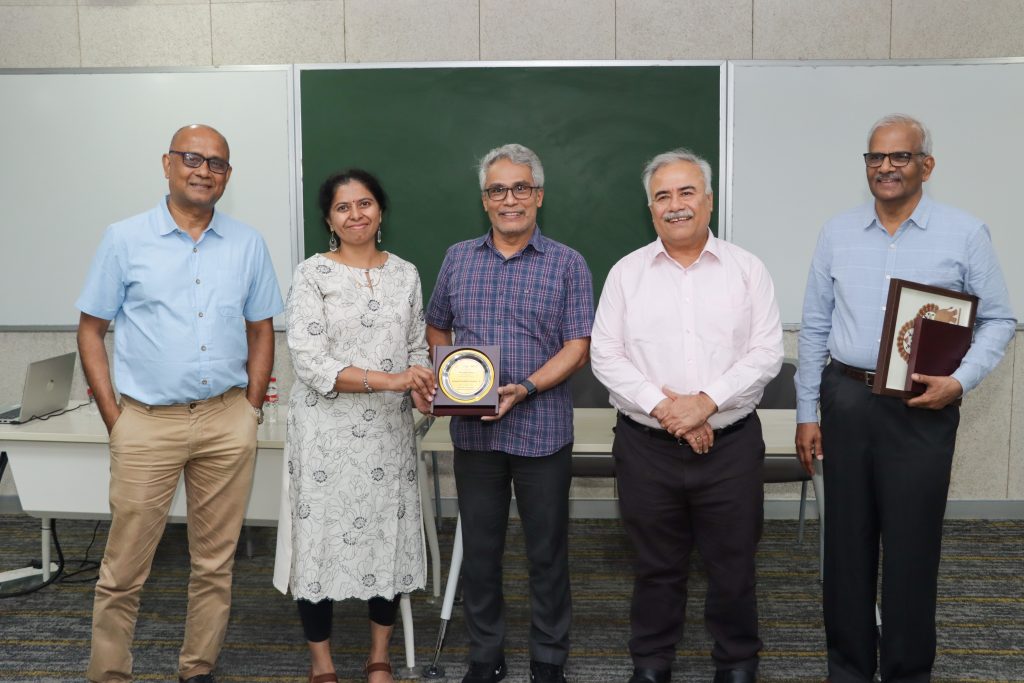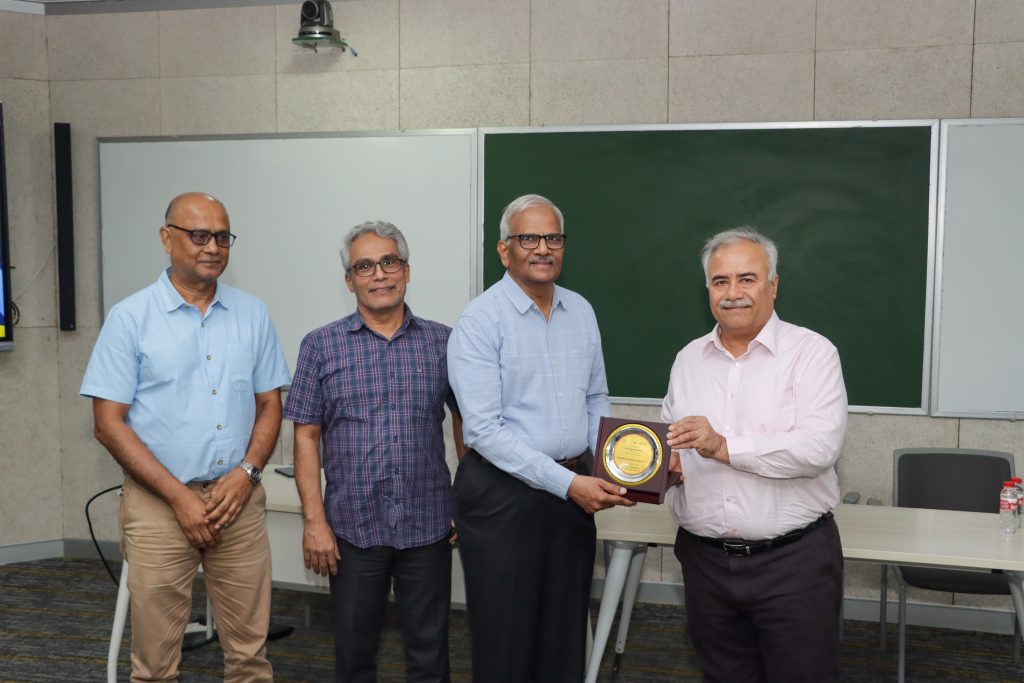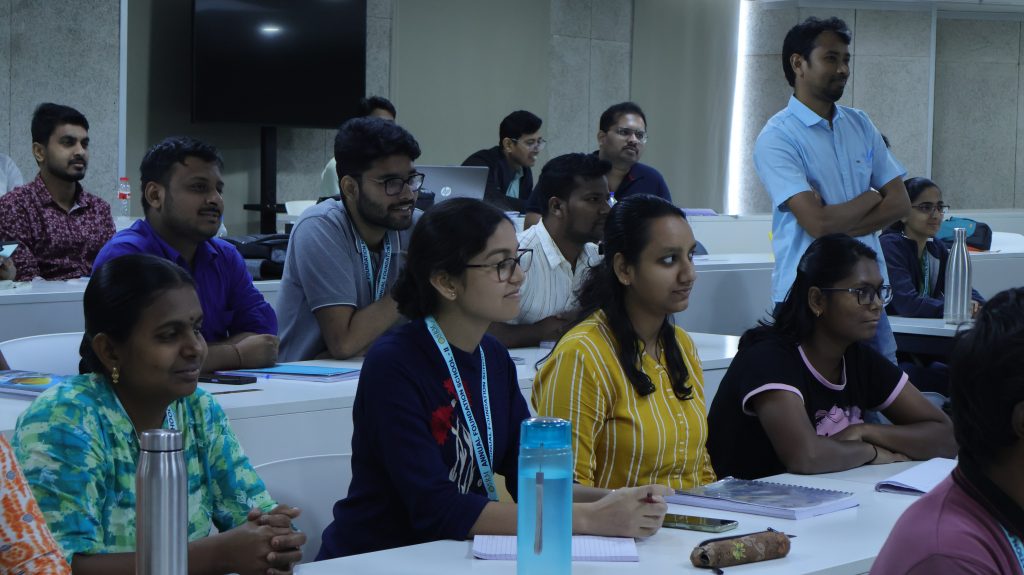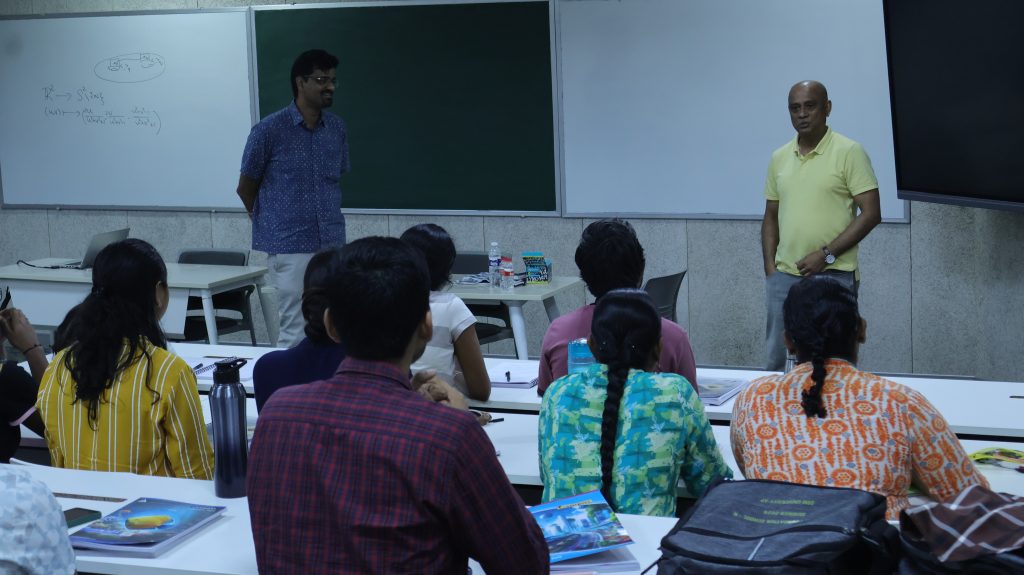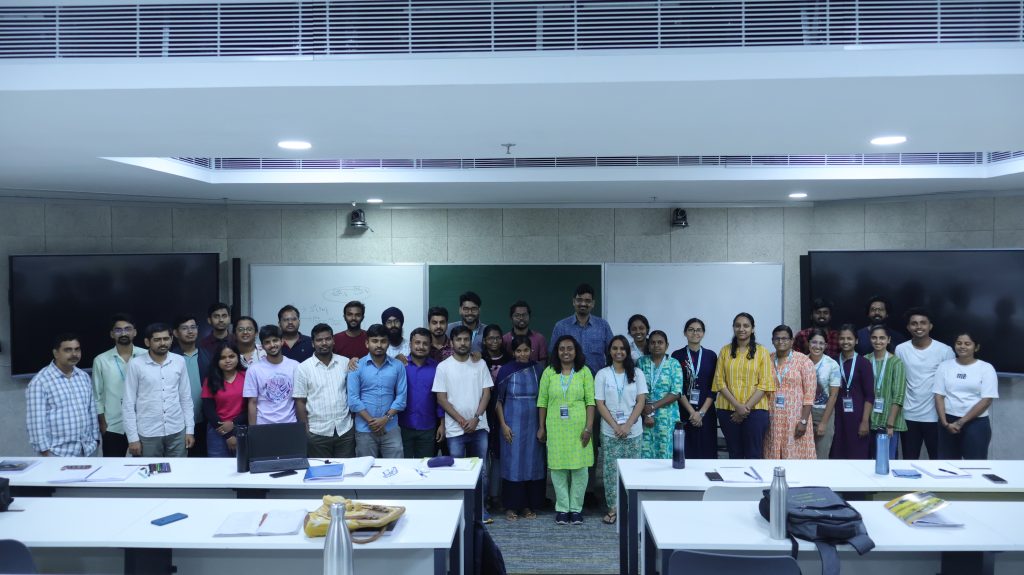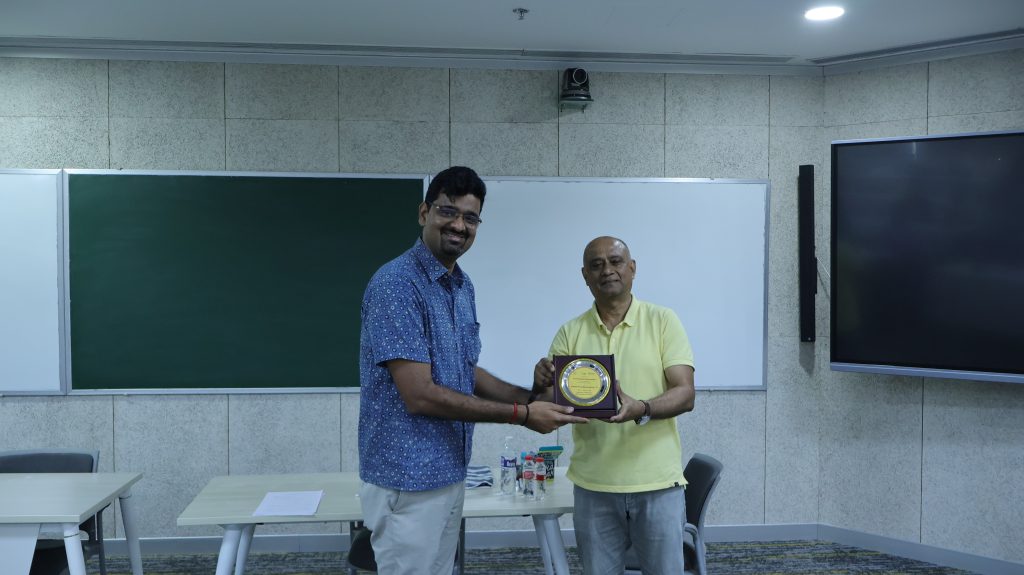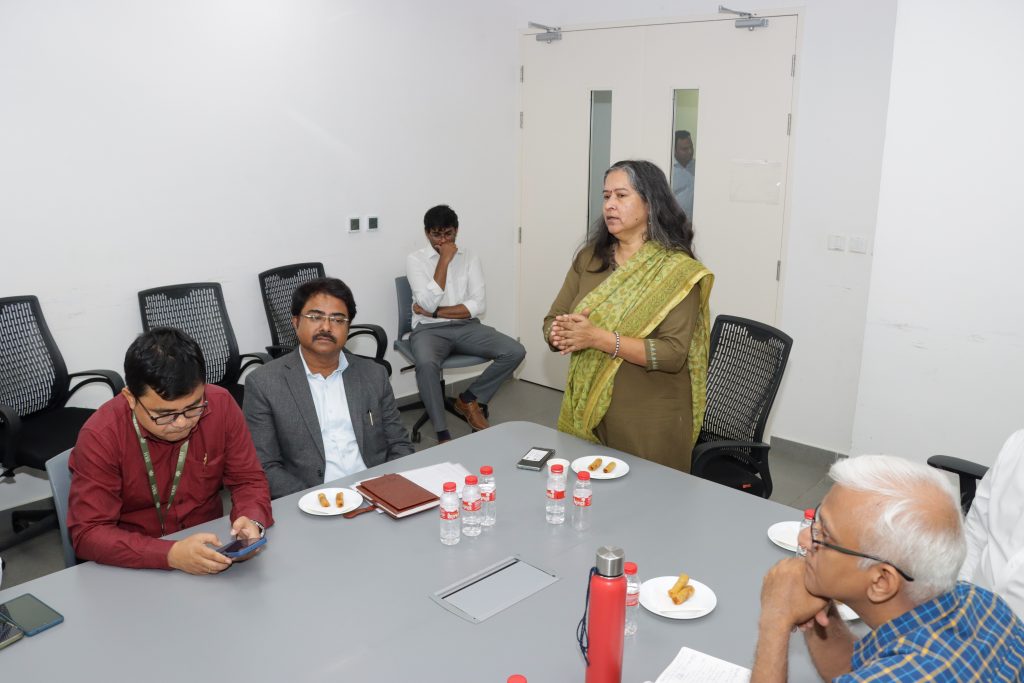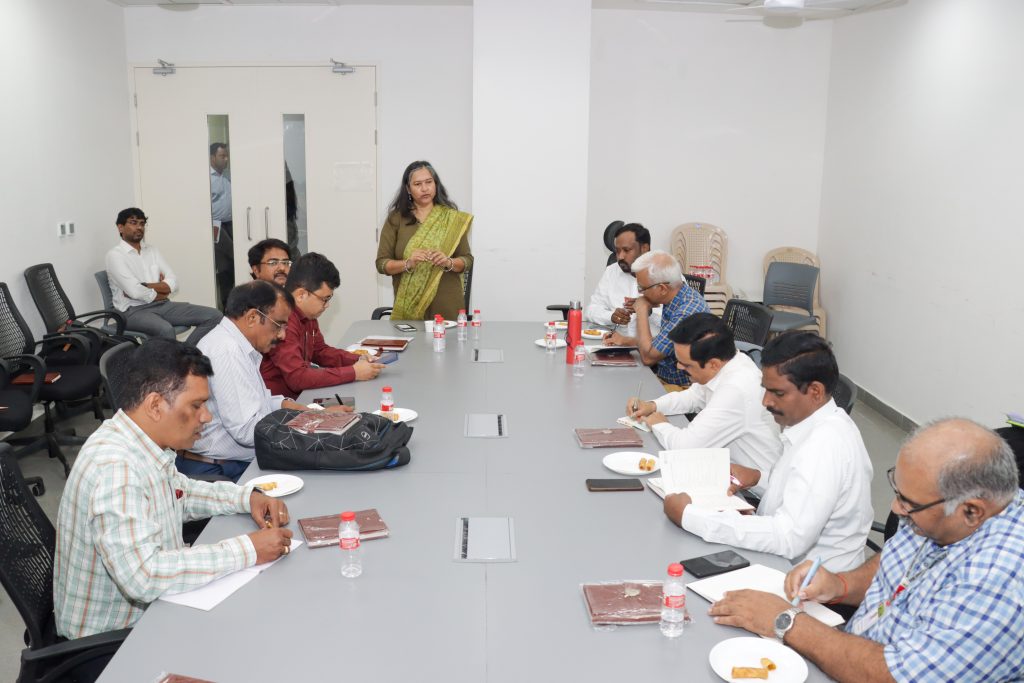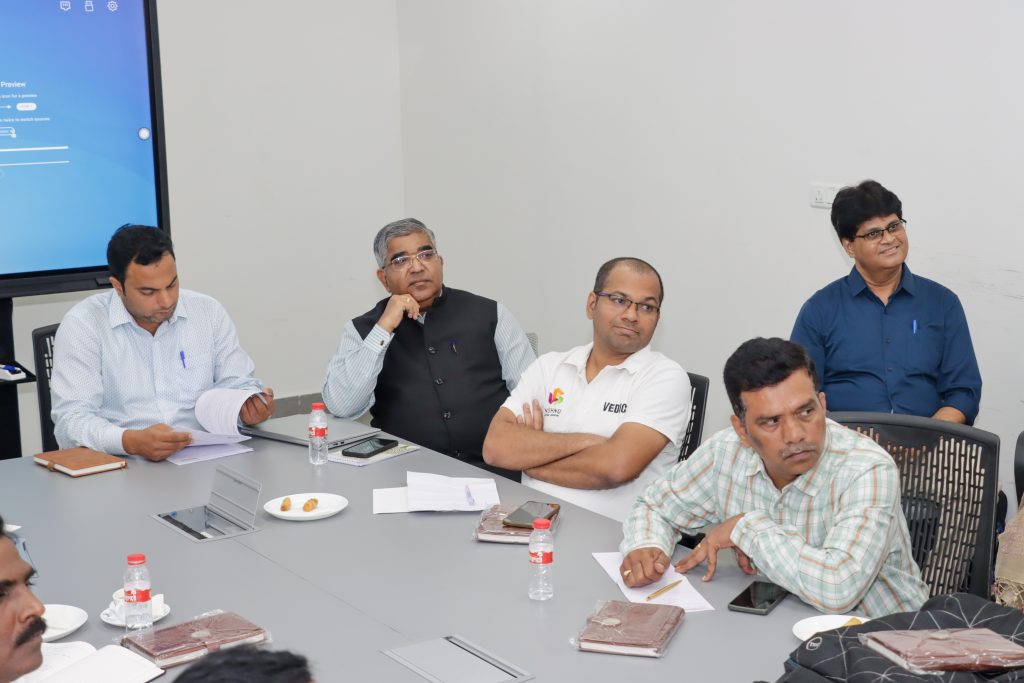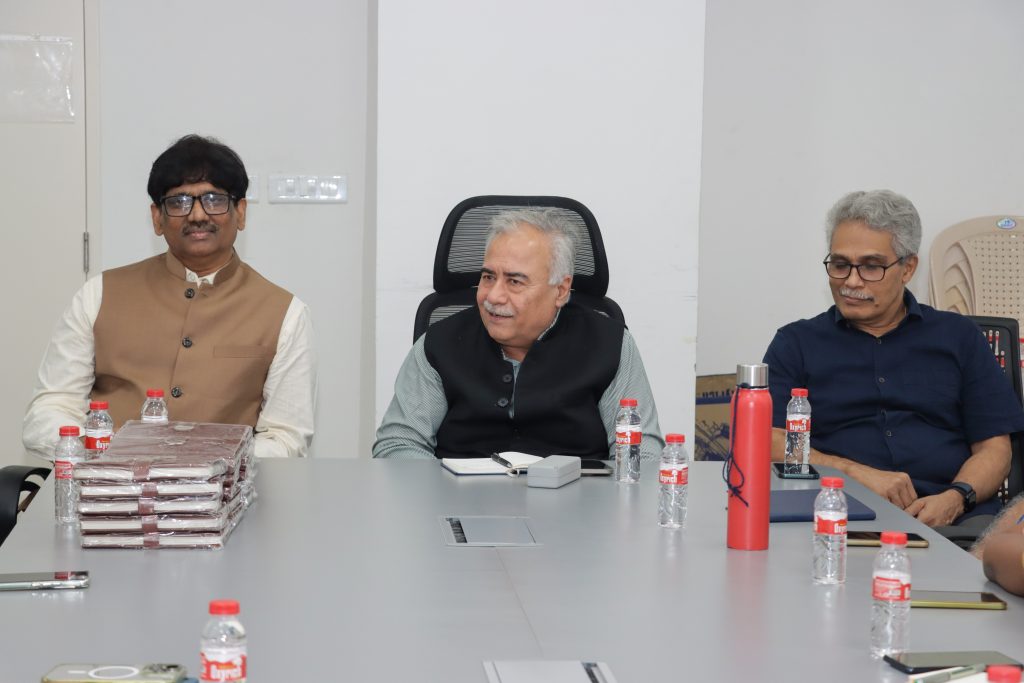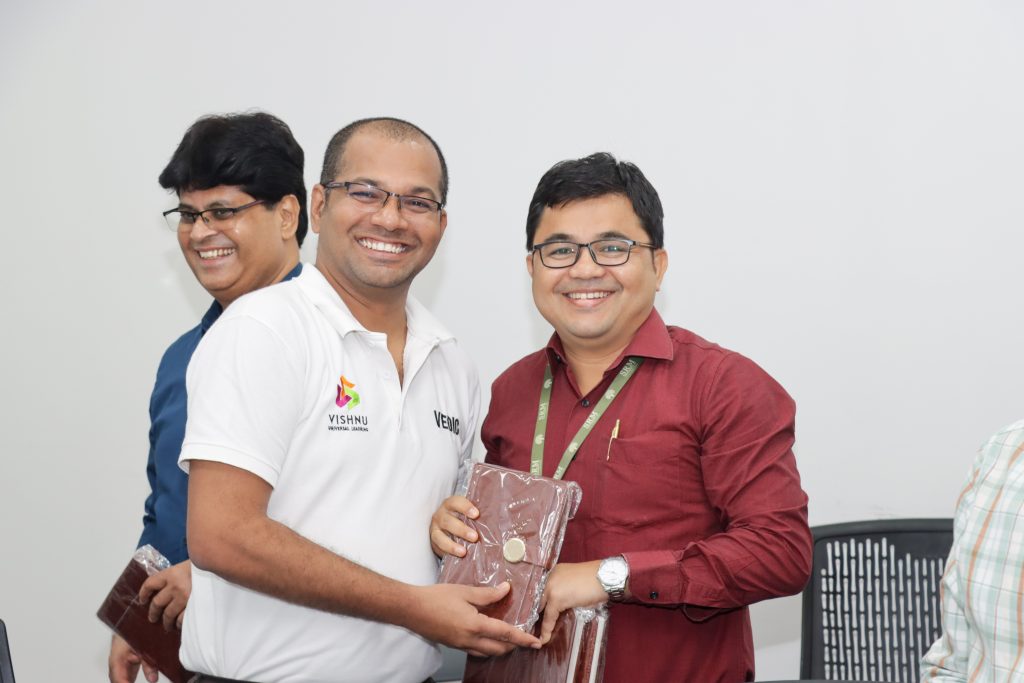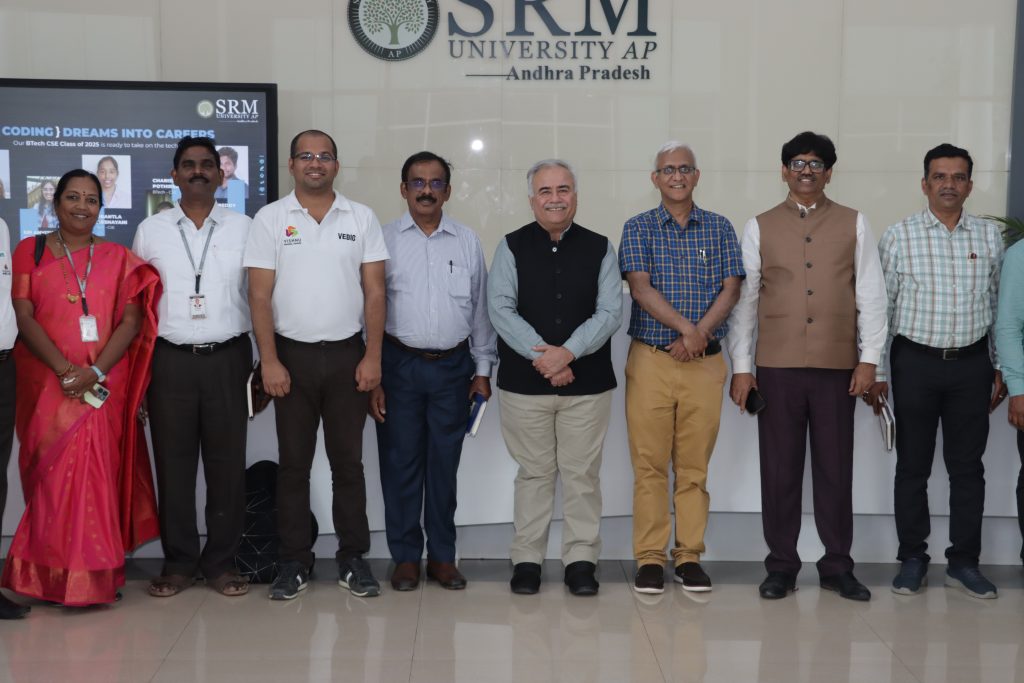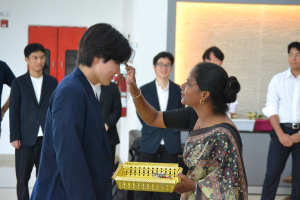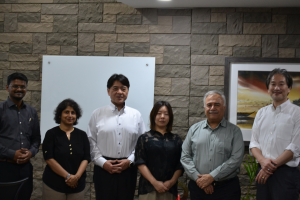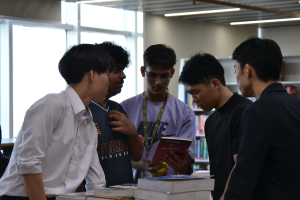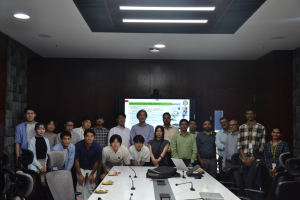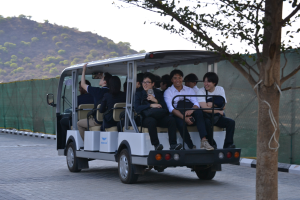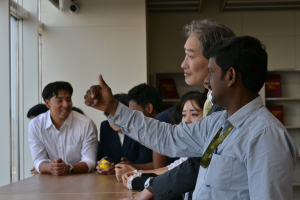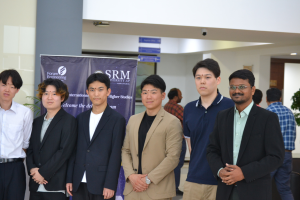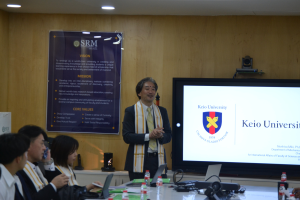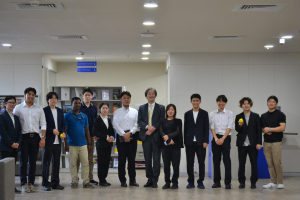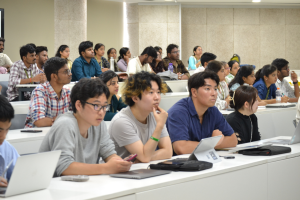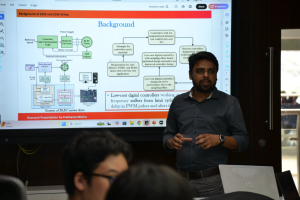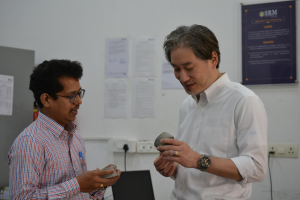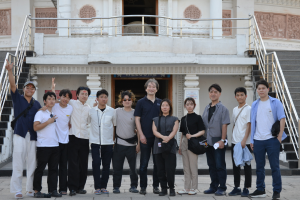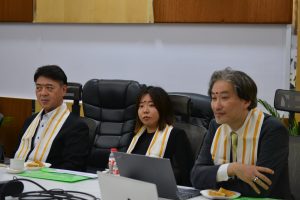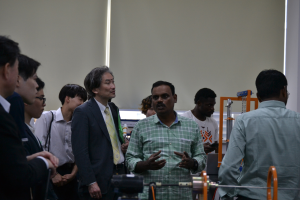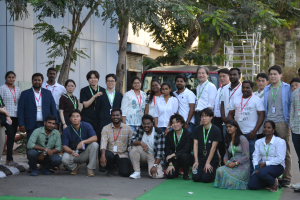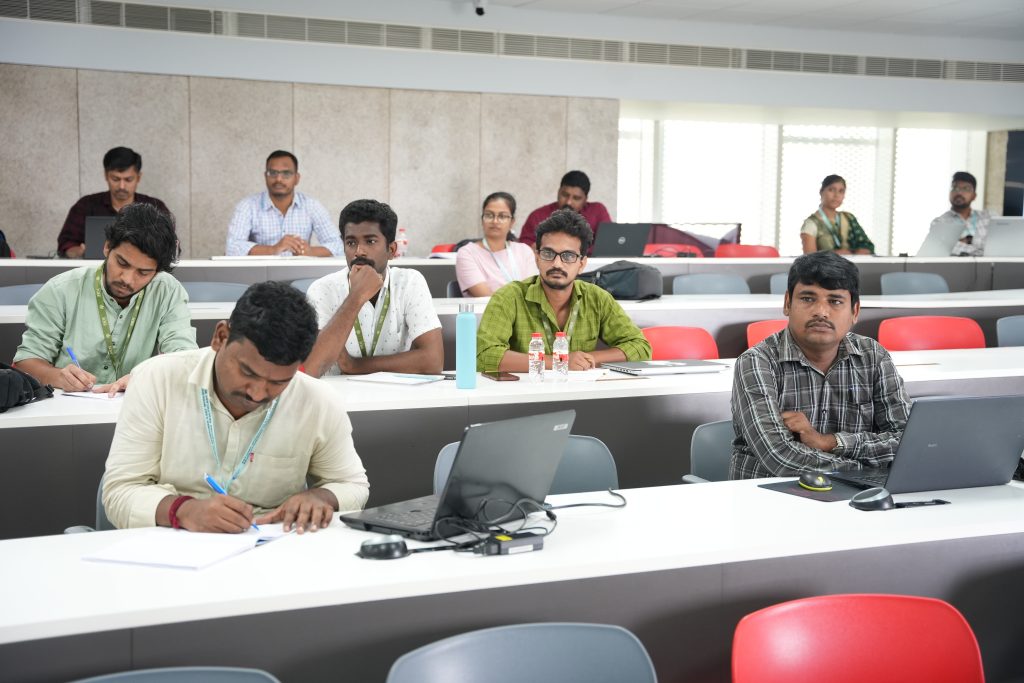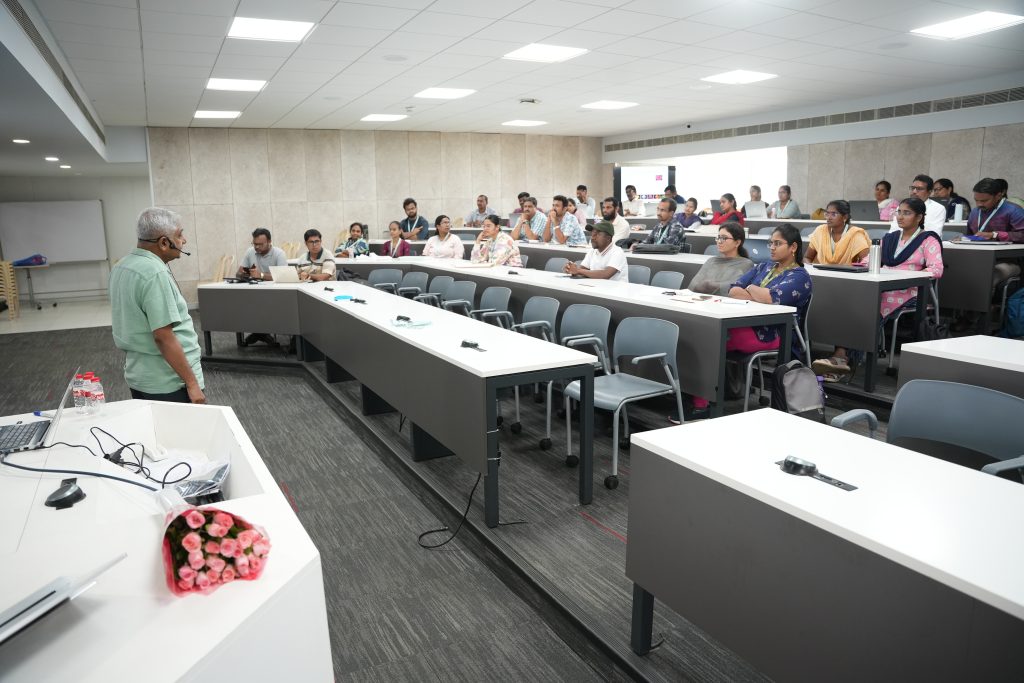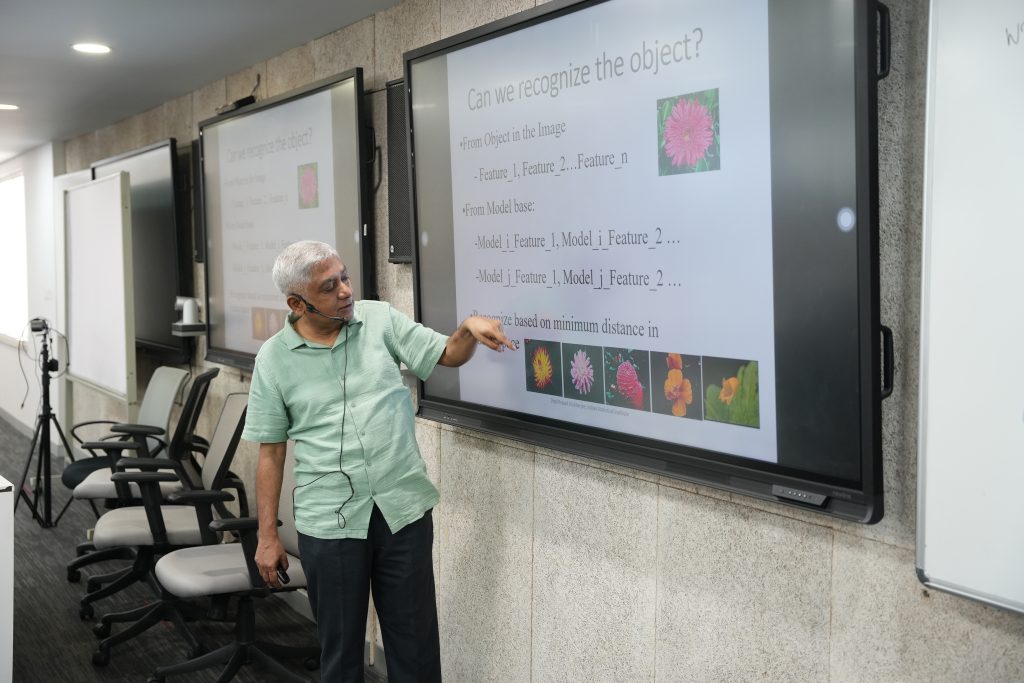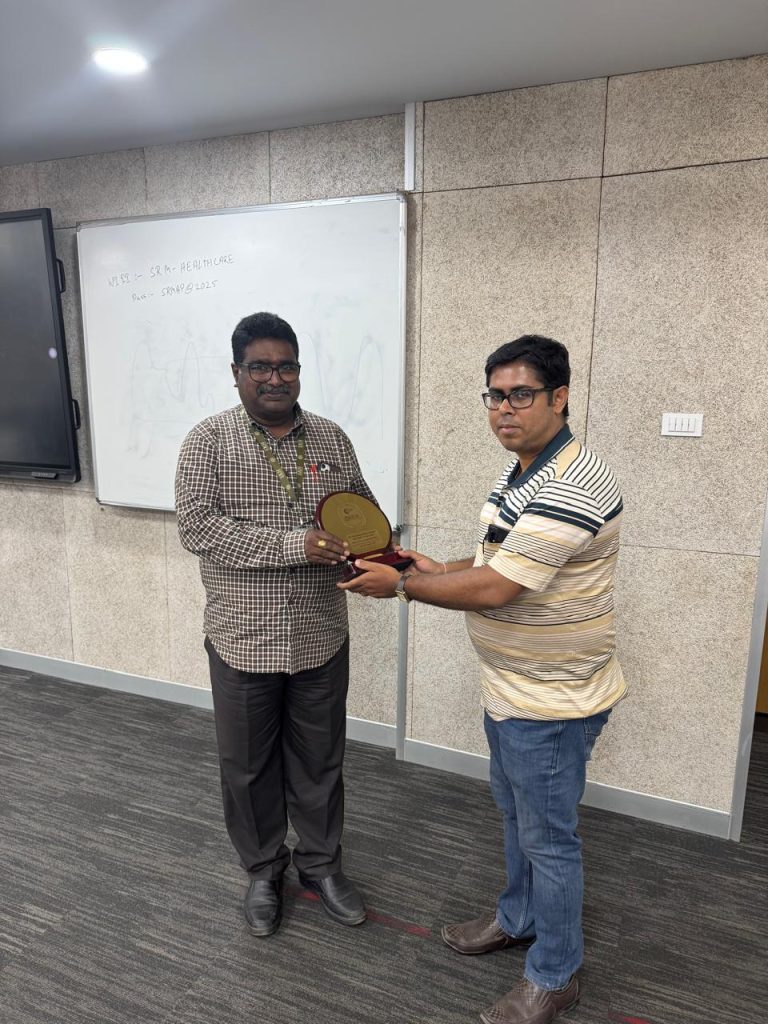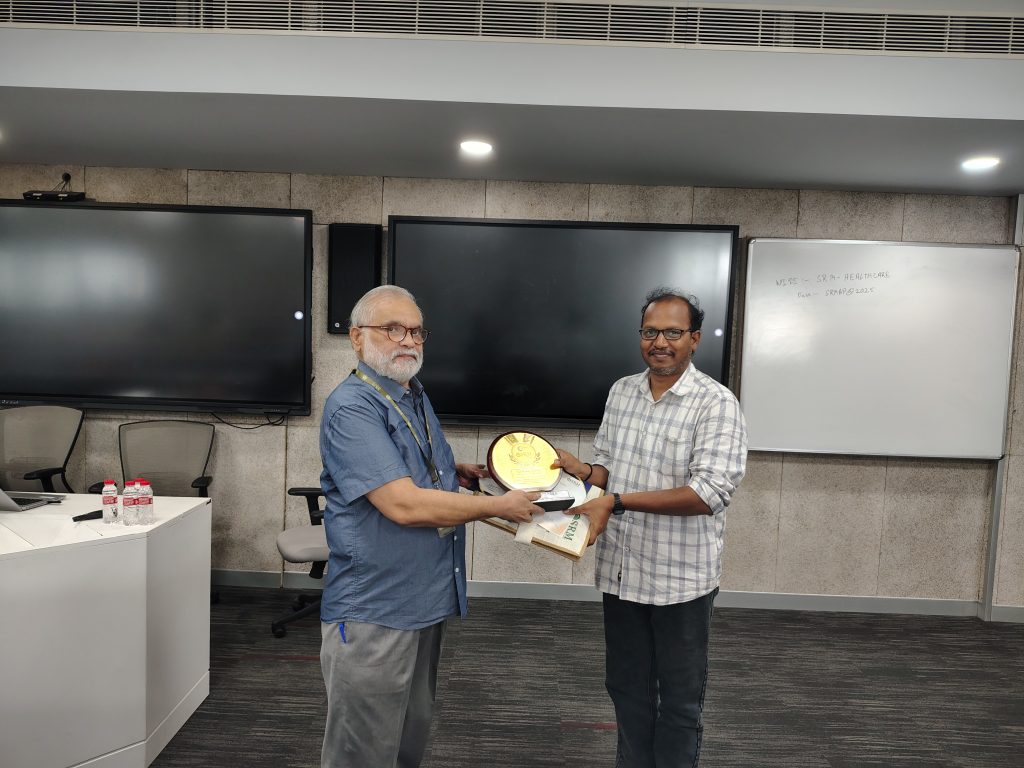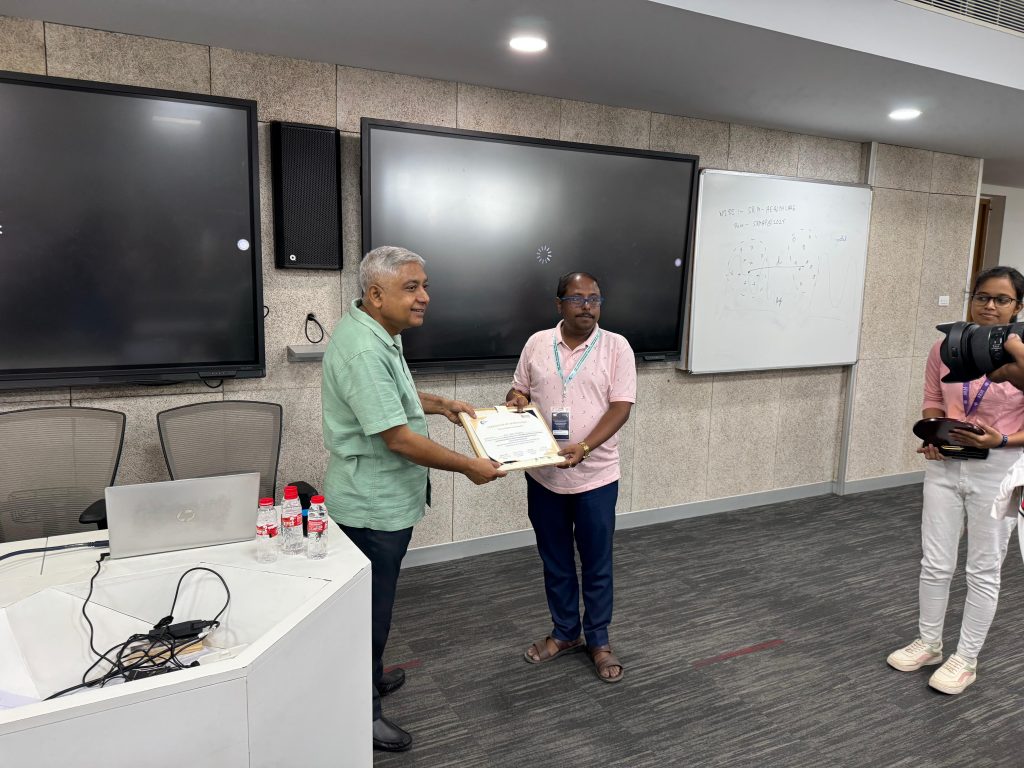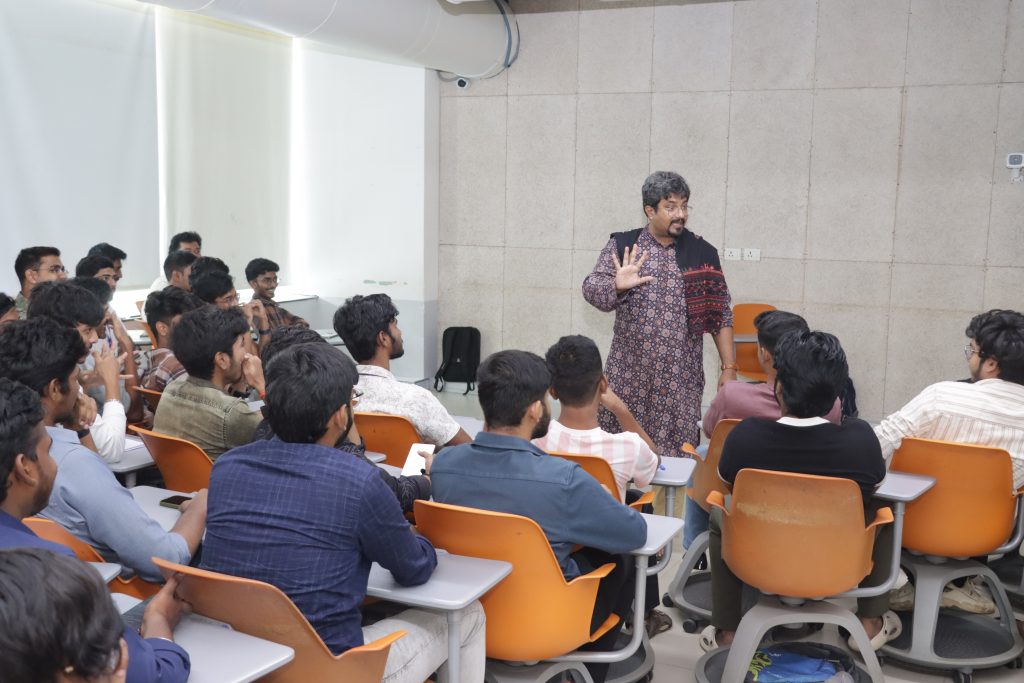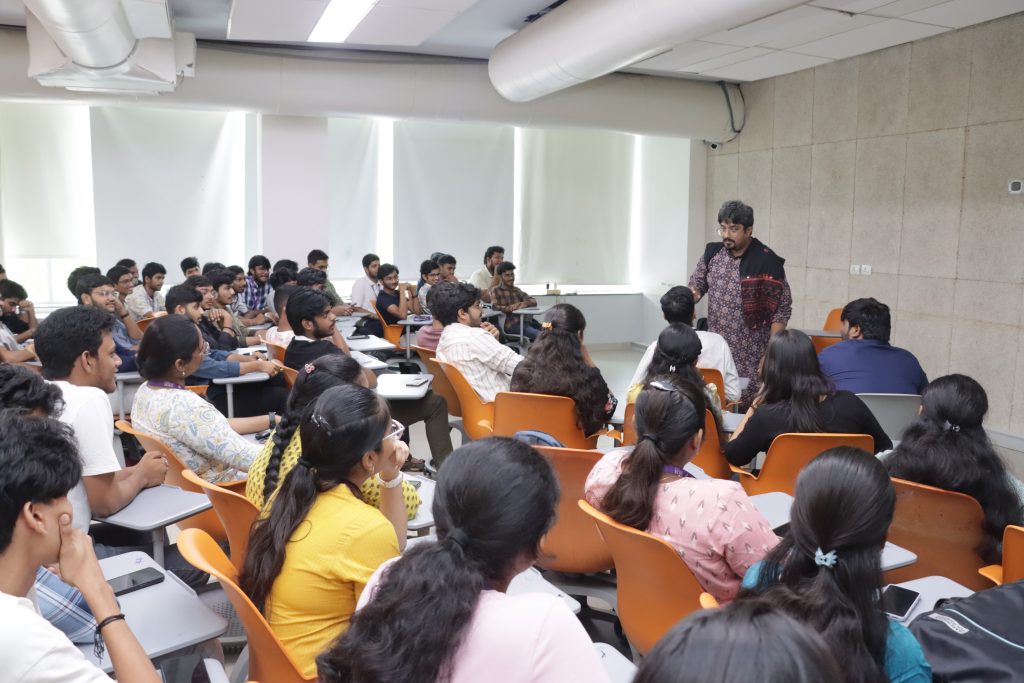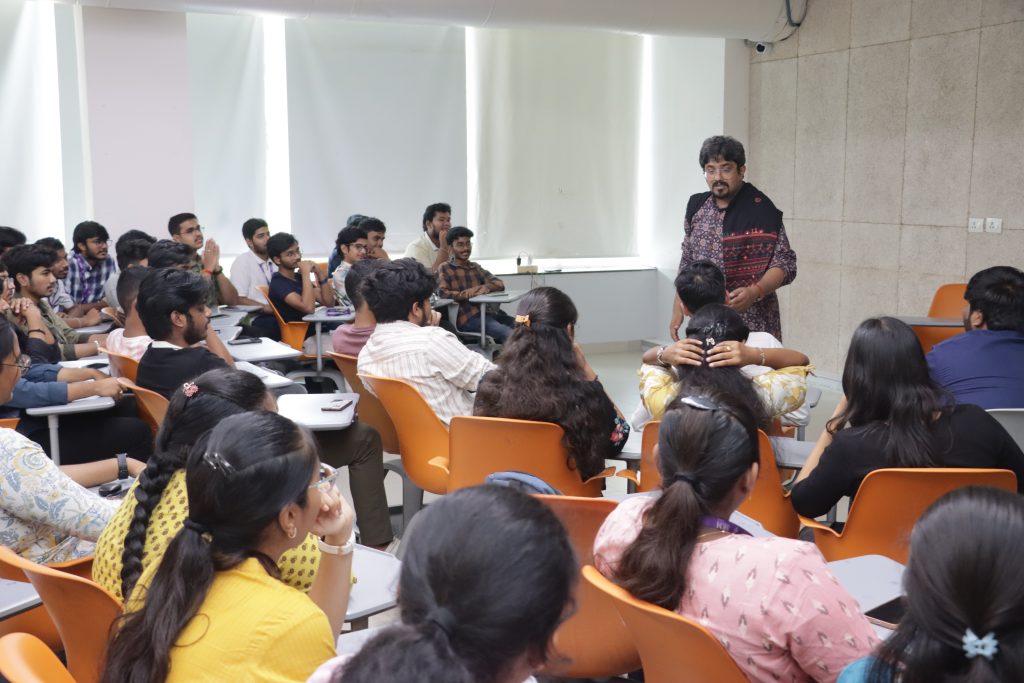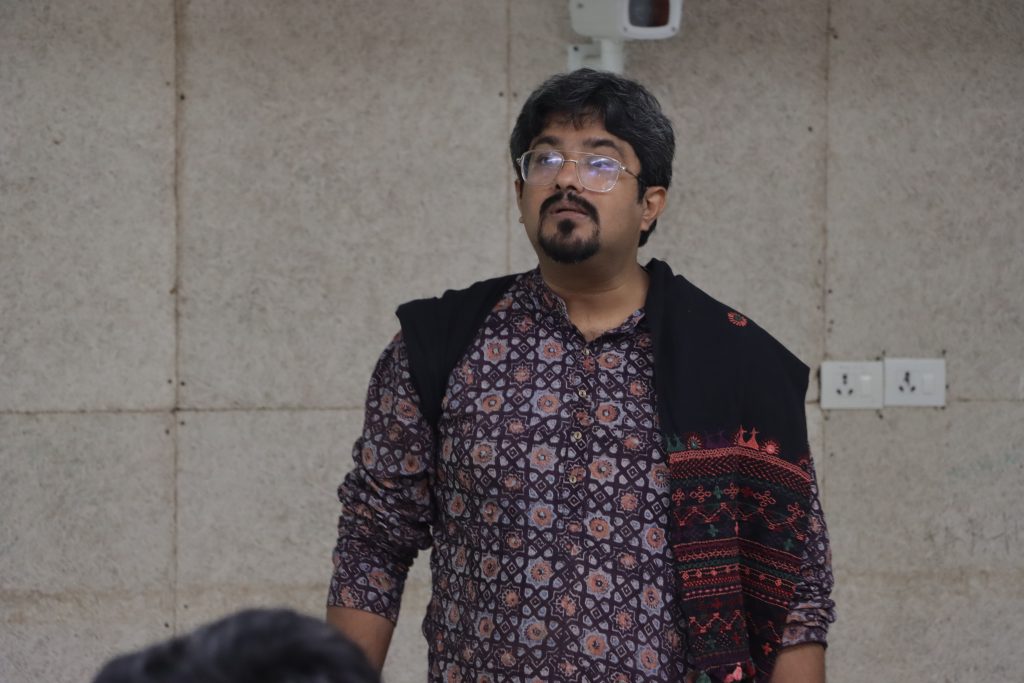Envisioning Future Higher Education: Prof. Arora at the 99th AIU Meeting
Vice Chancellor, Prof. Manoj K Arora, an esteemed member of the Governing Council of the Association of Indian Universities (AIU), took part in its 99th Annual General Body Meeting and National Conference of Vice Chancellors. This significant event hosted by Amity University Uttar Pradesh in Noida on June 23–24, 2025, witnessed the participation of eminent leaders of the Higher Education System, National and International delegates exchanging ideas on various policies and initiatives for the betterment of higher education institutions in the country and worldwide.
The Conference, centred around the theme of Envisioning Future Higher Education: The Pivotal Role of India, featured multiple parallel tracks, such as Promoting Quality Research, Innovative Assessment Methods and Experiential Learning, Catering Diversity & Inclusivity on Campus, Incorporating Indian Knowledge System in Curriculum & Pedagogy, and so on.
During the Plenary session, Prof. Manoj K Arora emphasised the impact of AI on Learning, Research, and Governance, as well as the need for Restructuring of Future Higher Education Institutions and the importance of Preparing Students for Future Jobs. He remarked, “Education reforms, as envisaged in NEP 2020 shall continue to happen in an age when AI, Automation and Technological intervention are at their peaks. The world is also going through lots of uncertainties. It is therefore important that we have a relook at our education. It is the prime duty of the educators to mould our younger generation to make them holistic global citizens of the world and make them ready for the Viksit Bharat in 2047. Our educational systems need to devise a curriculum that integrates knowledge, skills, training and certification, all together. The so-called 21st-century skills need to become part and parcel of each course being taught by the faculty in the classroom. The role of a teacher may not be limited to just teaching, but to facilitating learning in many different forms. Collaborative learning, fostering a growth mindset, use of technology, blended and hybrid learning, project-based learning, industry-relevant learning, value-based education and career guidance and counselling are the need of the hour. All these, a teacher can do in their courses and create an environment where learning happens.”
The plenary session was chaired by Prof. Dinesh Singh, former Vice Chancellor of the University of Delhi, also featured insights from other distinguished education leaders, including Dr S Vaidhyasubramaniam, Vice Chancellor of SASTRA University, and Prof. (Dr) G S Bajpai, Vice Chancellor of National Law College, Delhi. Their collective expertise contributed to a substantive dialogue regarding the future of education in India.
The AIU Annual General Body Meeting is a flagship event that brings together Vice Chancellors, national and international academic leaders, and higher education policymakers to build consensus on the way forward for academic institutions across the country.
Office of Dean Research Organises Two-Day Workshop on X-ray Diffraction Techniques
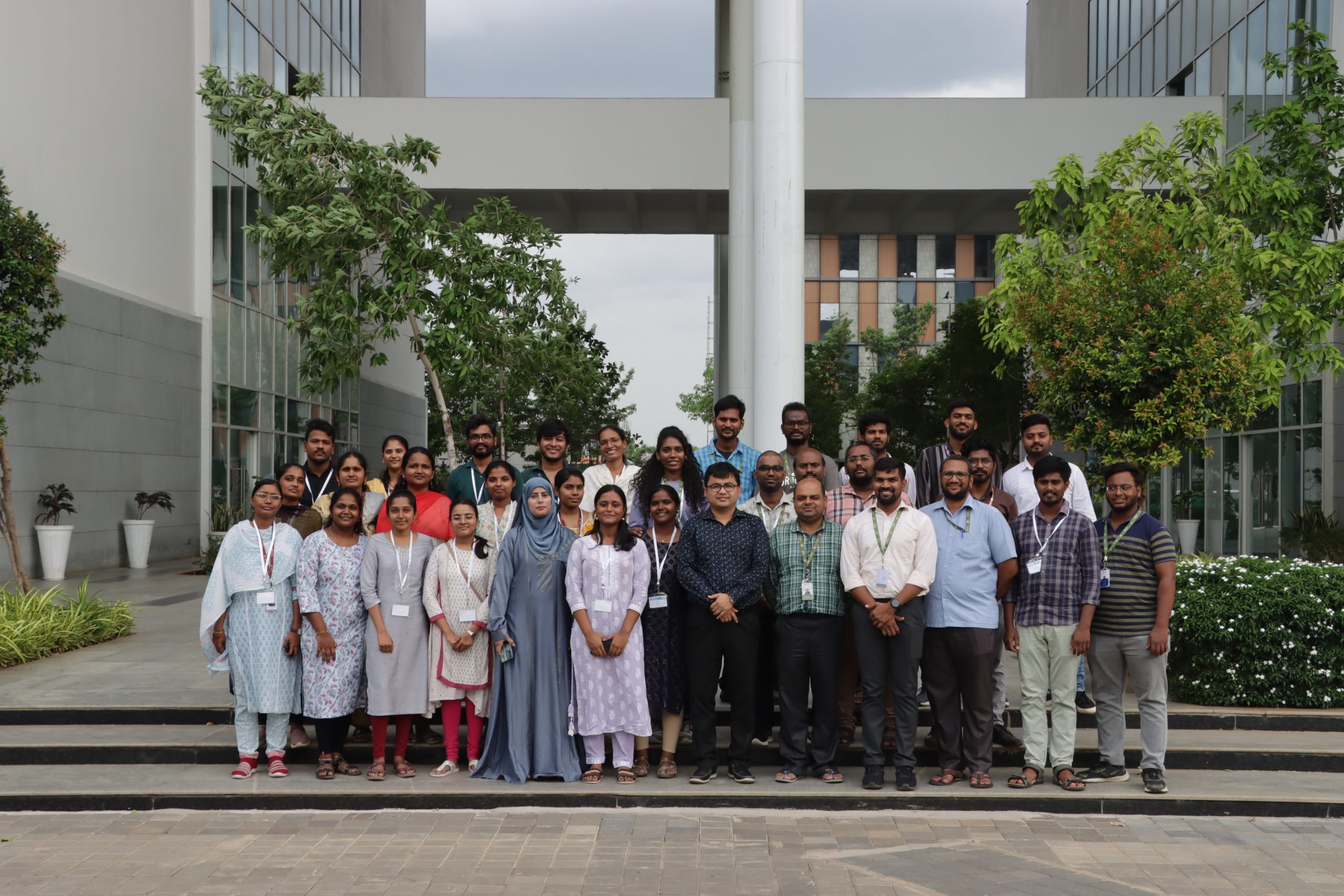 The Office of the Dean-Research organised a two-day meet on X-ray Diffraction Technique. The hands-on workshop was led by Prof. L N Patro, Mr Arun Kumar Bandarapu and Mr K Sumit through various sessions in coordination with Mr Ch Srinivas, in the presence of Dr Ranjith Thapa and Dr Sabyasachi Mukhopadhyay, among others. The event saw the participation of over 80 attendees, including 40 participants from various universities and colleges across the region.
The Office of the Dean-Research organised a two-day meet on X-ray Diffraction Technique. The hands-on workshop was led by Prof. L N Patro, Mr Arun Kumar Bandarapu and Mr K Sumit through various sessions in coordination with Mr Ch Srinivas, in the presence of Dr Ranjith Thapa and Dr Sabyasachi Mukhopadhyay, among others. The event saw the participation of over 80 attendees, including 40 participants from various universities and colleges across the region.
The objective of the event was to provide a comprehensive platform for academic and research participants to explore the fundamentals and applications of X-ray Diffraction (XRD) and to combine theoretical grounding with hands-on experience, thereby strengthening technical capabilities in material characterisation and promoting collaborative learning across institutions.
The workshop was divided into several sessions, namely the theoretical, interactive and practical sessions alongside a session on sample analysis, offering the participants an in-depth understanding and hands-on learning experience. Participants were also offered a comprehensive session on accessing I-STEM and the process of booking XRD facilities via the I-STEM (Indian Science Technology and Engineering facilities Map) portal. Attendees were walked through each step, including user registration, instrument search, booking protocols, and submission best practices. The session aimed to enhance awareness and access to high-end scientific infrastructure for researchers across institutions.
The two-day workshop helped participants acquire practical competency in handling XRD equipment and interpreting results while fostering cross-disciplinary dialogue and broad understanding of characterisation tools. The XRD Users Meet served as a dynamic platform enabling participants to build foundation knowledge and hands-on competence in X-ray Diffraction Techniques.
- Published in News, Research News
Annual Foundation School (AFS)-II, 2025 Concludes
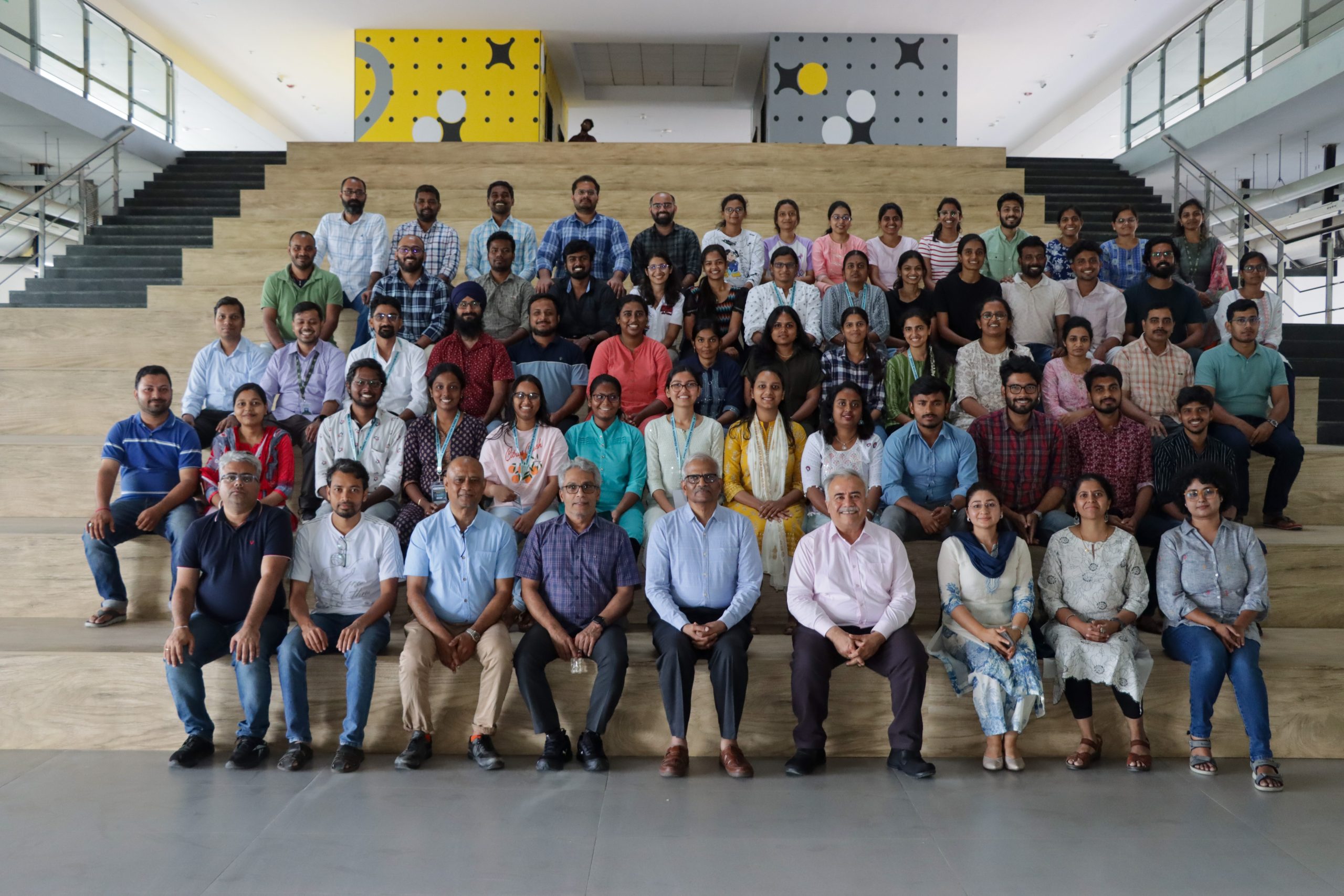 SRM University-AP concluded the second edition of the prestigious four-week intensive Annual Foundation School for Students of Mathematics. The programme, hosted in collaboration with the National Centre for Mathematics, a joint centre of TIRF and IIT, saw 31 students from various Indian universities participate.
SRM University-AP concluded the second edition of the prestigious four-week intensive Annual Foundation School for Students of Mathematics. The programme, hosted in collaboration with the National Centre for Mathematics, a joint centre of TIRF and IIT, saw 31 students from various Indian universities participate.
The participants were primarily PhD Scholars from universities like IIT Delhi, IISER Tirupathi, IIT Bombay, Jadavpur University, Ashoka University and Kannur University, to name a few. The main objective of the Foundational School was to offer training in fundamental mathematical concepts to Ph.D. scholars, emerging Researchers, and educators.
The four-week intensive training commenced on May 12, 2025, in the presence of Dean-SEAS, Prof. C V Tomy; Head of the Department, Prof. Kalyan Chakraborty; faculty members and students from the Department of Mathematics. The event was also graced by the presence of resource persons and course associates like Prof. Indranath Sengupta, Professor-IIT Gandhinagar; Prof. J. K. Verma, Professor-IIT Gandhinagar; Prof. Nikita Agarwal, Professor-IISER Bhopal; Dr Senthil Rani K S, Assistant Professor-IISER Berhampur; Dr Chaitanya J Kulkarni, Postdoctoral Fellow-IISER Mohali; Prof. Kashyap Rajeevsarathy, Professor-IISER Bhopal; Dr Ramesh Kasilingam, Assistant Professor-IIT Madras; Dr Archana Morye, Assistant Professor, University of Hyderabad, among others. The Foundation School dealt with topics like Algebra II, Analysis II and Topology II.
The Annual Foundation School (AFS) II, offered a stellar opportunity for the participants to engage, learn, and understand mathematical concepts while interacting with students from diverse academic backgrounds. The event concluded on June 07, 2025, and as part of the closing of the four-week foundational school, the university leadership, departmental heads, and faculty felicitated the resource persons with mementos honouring them for their contributions during the foundation course.
- Published in Departmental News, Math News, News
Uniting Forces, Leveraging Synergy: SRM AP Join Hands with Vishnu Group
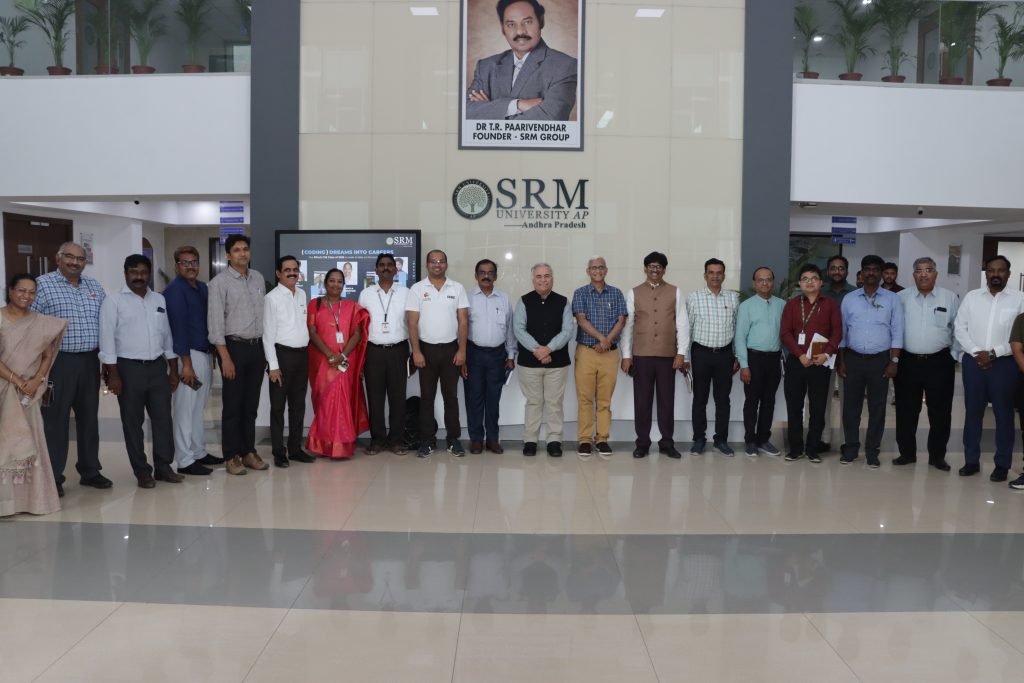
Vishnu Group of Institutions, a prominent name in the educational society in the West Godavari District of Andhra Pradesh visited SRM University-AP, exploring for a collaboration across multiple domains.
The Vishnu Group of Institutions presently comprises nine constituent colleges, serving over 20,000 students across a diverse range of programs, including Engineering, Dental Studies, Pharmacy, BSc, MCA, Polytechnic, and K-12 education. The Group operates with a profound sense of purpose and unwavering commitment, dedicated to fostering engaging learning experiences in the rural regions of Andhra Pradesh and Telangana.
The event saw the presence of SRM University-AP‘s Vice Chancellor, Prof. Manoj K Arora; Pro-Vice Chancellor, Prof. Ch Satish Kumar; Dean-SEAS, Prof. C V Tomy; Dean -Research, Prof. Ranjit Thapa, among other members of the faculty and Staff, alongside the staff and faculty from Vishnu Group of Institutions.
On the occasion, Vice Chancellor Prof. Manoj K Arora outlined the university’s growth trajectory, stating that the faculty has been a key factor contributing to the varsity’s success. Our faculty has been hired from some of the most-premier institutions of the country and world, fostering a multi-cultural nucleus of learning. “We, as a university, place a lot of emphasis on faculty and their training.” He also stressed the need to advocate for knowledge dissemination.
Prof. Arora highlighted the incredible support that the SRM University Management exerts towards fortifying the research acumen, and the SEED Grant is one such instance. Speaking of the Research prowess of the varsity, Prof. Arora also stated that the research at the varsity is predominantly interdisciplinary in nature. He echoed the words of the Pro-Chancellor, who believes – “Think Big, Do Big” thereby emphasising the importance of learning over teaching.
Prof. Arora also mentioned the landmark collaboration with Carnegie Mellon University. “Our ambitions are high; we will continue to grow,” stated the Vice Chancellor. Speaking on the occasion, the Pro-Vice-Chancellor, Prof. Ch Satish Kumar, added, “At SRM University-AP, we don’t just encourage the faculty but also the students to focus on Research.” He also quoted the NEP, stating the emphasis the policy places on student-based research at all levels of learning.
Prof. Satish cited the old education system, which was based on the concepts of ‘Bhay’ and ‘Bhakti’ (fear and devotion) towards teachers. He stated, “today, the education system cannot run on this ideology. The present system requires us to mentor the students, eliminating the concepts of ‘Bhay’ (fear towards teachers) Mentoring is the key to our system of teaching and learning here at SRM University-AP.”
The event also witnessed Deans and Directors briefing the delegation from Vishnu Group of Institutions on the functioning of the various Departments and Directorates at SRM AP.
- Published in News, Research News
Discover India: Keio University Delegates Explore Indian Culture
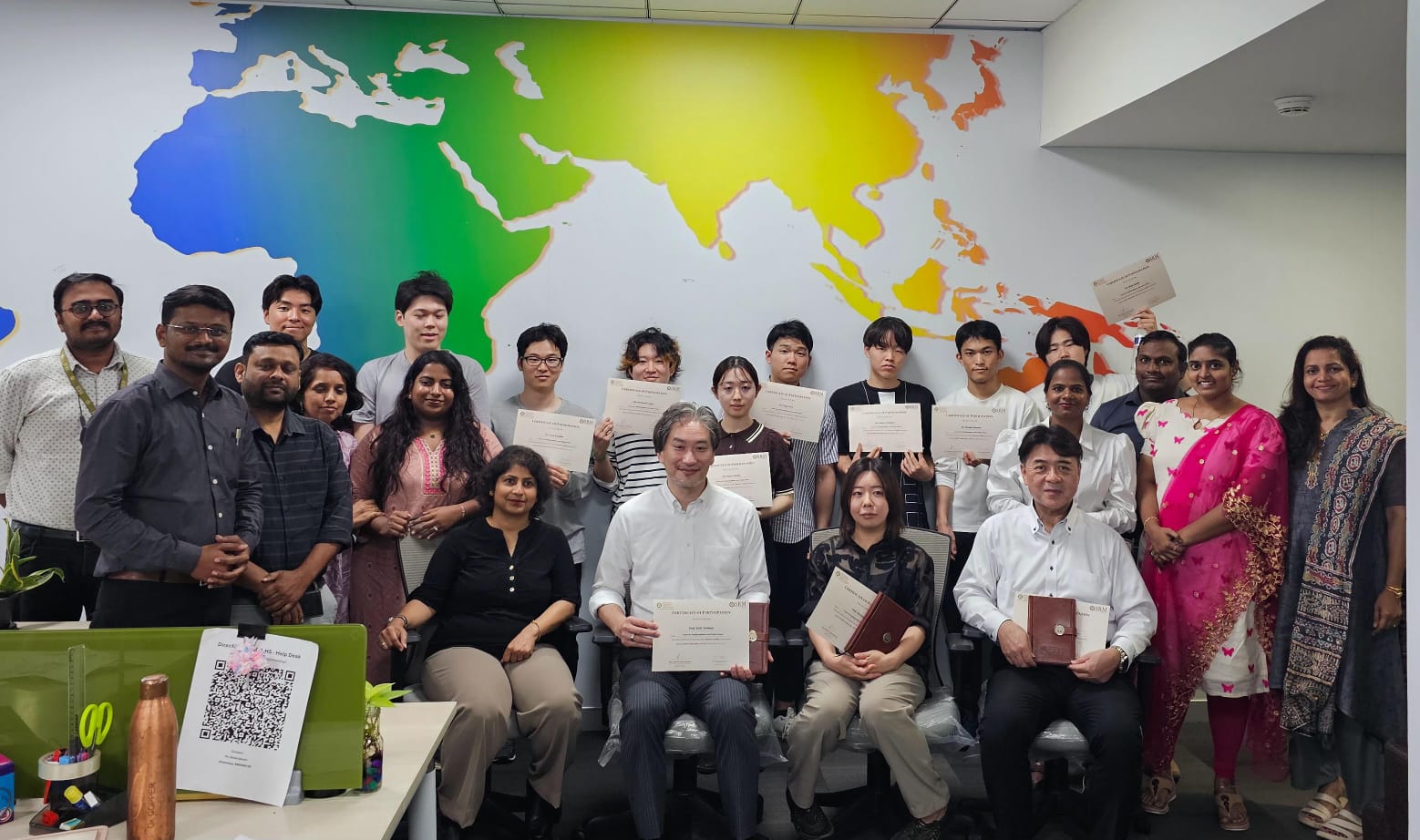 The Directorate of International Relations & Higher Studies (IR&HS) welcomed the students and faculty from Keio University and Forum Engineering, Japan, for the “Discover India 2025” programme.
The Directorate of International Relations & Higher Studies (IR&HS) welcomed the students and faculty from Keio University and Forum Engineering, Japan, for the “Discover India 2025” programme.
Inaugurated by the Vice Chancellor, Prof. Manoj K Arora in the presence of Dean – School of Engineering and Sciences, Prof. C V Tomy, alongside Dean – Easwari School of Liberal Arts, Prof. Vishnupad; Assistant Dean-Research, Dr Mahesh Kumar Ravva; and Assistant Professor-Department of Civil Engineering, Dr Pranav R T Peddinti, among others. “Discover India 2025” is a flagship initiative of the university to promote India’s cultural and knowledge traditions.
Mr Lakshmi Narasimhan, Director and Dr Sudeshna Saha, Assistant Director of International Relations and Higher Studies, received the international students at the grand inaugural ceremony. Students participated in various short courses on Research Area Introduction, Mechanical Engineering Labs and Centre Visits at Electronic Cooling & Gold Centre. Presentations on Robotics, Additive Manufacturing & Bio Printing Materials. Keio University professors and students interacted with PhD Research Scholars and faculty from the Deaprtment of Mechanical Engineering regarding their projects and other research works.
Talks on various mobility programmes, including Student and Faculty Exchange, Transfer Programmes, Joint Research initiatives, and opportunities for mutual collaboration between Keio University and SRM University AP were held. An interactive session was organised for Destination Japan students currently learning Japanese at SRM University-AP, supported by SRM Global. Professors Miki Norihisa & Prof. Hasegawa AI delivered an engaging presentation on Keio University, highlighting the job and internship opportunities in Japan. The session provided a platform for Destination Japan students to interact with peers learning Japanese. Over 52 students actively participated, making the event a resounding success.
As part of the 3-day “Discover India” programme, SRM University-AP organised an industrial visit to Tech Mahindra in Vijayawada, on March 20, 2025. A total of 15 participants, including professors, staff, and students from Keio University, Forum Engineering, and SRM University-AP, attended.
The Japanese delegation had an enriching experience, interacting with Tech Mahindra Operation team and the Head of Training and Recruitment team. Participants visited landmark locations such as the Dhyana Buddha statue, Amaravati Temple and the Kanaka Durga Temple in Vijayawada, deepening their appreciation of Indian culture.
- Published in Departmental News, IR-News, News
Teacher-Student Duo Research on Dark Matter Model
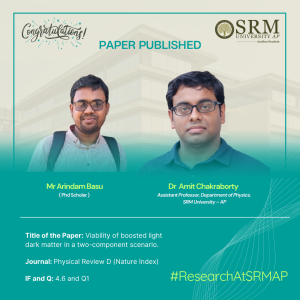 As a significant contribution to science, Assistant Professor Dr Amit Chakroborty and his Doctoral Scholar, Arindam Basu, from the Department of Physics have published a groundbreaking paper titled, Viability of boosted light dark matter in a two-component scenario in the Physics Review D (Nature Index ) Journal. The research explores a two-component dark matter model and addresses the theoretical challenges in hopes of improving our understanding and painting a complete picture of dark matter.
As a significant contribution to science, Assistant Professor Dr Amit Chakroborty and his Doctoral Scholar, Arindam Basu, from the Department of Physics have published a groundbreaking paper titled, Viability of boosted light dark matter in a two-component scenario in the Physics Review D (Nature Index ) Journal. The research explores a two-component dark matter model and addresses the theoretical challenges in hopes of improving our understanding and painting a complete picture of dark matter.
Abstract
We study the boosted dark matter (BDM) scenario in a two-component model. We consider a neutrinophilic two-Higgs doublet model (ν2HDM), which consists of one extra Higgs doublet and a light right-handed neutrino. This model is extended with a light (∼ 10 MeV) singlet scalar DM ϕ3, which is stabilized under an extra dark ZDM symmetry and can only effectively annihilate through the CP even scalar H. Although the presence of a light scalar H modify the oblique parameters to put tight constraints on the model, the introduction of vectorlike leptons (VLL) can potentially salvage the issue. The vectorlike doublet N and singlet χ are also stabilized through dark ZDM symmetry. The lightest vectorlike mass eigenstate (χ1 ∼ 100 GeV) is the second DM component of the model. Individual scalar and fermionic DM candidates have Higgs/Z mediated annihilation, restricting the fermion DM in a narrow mass region while a somewhat broader mass region is allowed for the scalar DM. However, when two DM sectors are coupled, the annihilation channel χ1χ1 → ϕ3ϕ3 opens up. As a result, the fermionic relic density decreases, and paves way for broader fermionic DM mass region with under-abundant relic: a region of [30 − 65] GeV compared to a narrower [40 − 50] GeV window for the single component case. On the other hand, the light DM ϕ3 acquires significant boost from the annihilation of χ1, causing a dilution in the resonant annihilation of ϕ3. This in turn increases the scalar DM relic, allowing for a smaller mass region compared to the individual case. The exact and underabundant relic is achievable in a significant parameter space of the two-component model where the total DM relic is mainly dominated by the fermionic DM contribution. The scalar DM is found to be sub-dominant or equally dominant
Practical Implementation/ Social Implications of the Research:
This research explores a new idea in the search for dark matter, the invisible substance that makes up most of the matter in our universe. Instead of assuming dark matter is made of just one kind of particle, this study investigates a two-component model, where a heavier dark matter particle can decay or interact to produce a lighter, faster one. These “boosted” light dark matter particles could leave detectable traces in experiments here on Earth. The study carefully examines how this model fits with current cosmological observations and what conditions are needed for it to work.
While the work is theoretical, it has strong practical implications: it can guide ongoing and future experiments in detecting dark matter more effectively. Understanding dark matter is one of the most important unsolved problems in physics, and progress here could lead to understanding more about the picture of the universe. In the broader sense, such deep-space research inspires innovation, sharpens technology, and fuels curiosity-driven science that ultimately benefits society.
Collaborations:
This work has been done in collaboration with Mr Arindam Basu, PhD Scholar, the Department of Physics, SRM University-AP.
Future Research Plans:
- Study of the Dark Matter Direct Detection prospects.
- Study of the Dark Matter Indirect Detection prospects.
- Searching new physics at energy frontier.
- Published in Departmental News, News, Physics News, Research News
Understanding Adolescent Stress through Psychosocial Factors
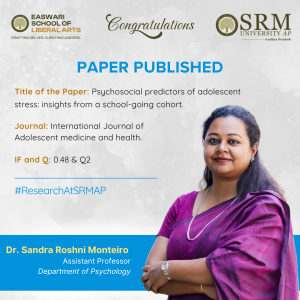 While the saying – ‘School time is the best time in a child’s life,’ would have been true years ago, it no longer reflects the current scenario among school-going adolescents. Today, children in school can be under just as much stress and burden as a fully grown adult. Though factors like academic pressure, social expectations, and family dynamics mattered even earlier, today these factors have developed a new-found intensity, and when topped with the hormonal changes, can adversely affect an adolescent, making their life challenging. Dr Sandra Roshni Monterio, Assistant Professor at the Department of Psychology, analyses the situation through her paper titled Psychosocial predictors of adolescent stress: insights from a school-going cohort.
While the saying – ‘School time is the best time in a child’s life,’ would have been true years ago, it no longer reflects the current scenario among school-going adolescents. Today, children in school can be under just as much stress and burden as a fully grown adult. Though factors like academic pressure, social expectations, and family dynamics mattered even earlier, today these factors have developed a new-found intensity, and when topped with the hormonal changes, can adversely affect an adolescent, making their life challenging. Dr Sandra Roshni Monterio, Assistant Professor at the Department of Psychology, analyses the situation through her paper titled Psychosocial predictors of adolescent stress: insights from a school-going cohort.
Brief abstract
This study investigates the psychosocial factors influencing stress among 1,104 school-going adolescents in Telangana, India. Utilising the Adolescence Stress Scale and various psychosocial measures, hierarchical multiple regression and serial mediation analyses revealed that emotional instability, ill health experiences, conscientiousness, and psychosocial support significantly predict adolescent stress, explaining 6% of the variance. Serial mediation models highlighted family health and emotional efficacy as key mediators. The findings underscore the complex interplay of psychosocial factors in adolescent stress and suggest targeted interventions focusing on emotional regulation and family health to mitigate stress.
Explanation of the Research in Layperson’s Terms
Adolescence is a time of big changes, and while this is true globally, Indian school-going children may experience these changes differently because of our unique cultural and social expectations. This research looks at why teenagers feel stressed and what factors contribute to it. We studied over 1,100 students from schools in Telangana, India, to understand how things like their personality, family life, and social support affect their stress levels. We found that feeling emotionally unstable, having health problems, being overly responsible, and even the kind of support they get from others can increase stress. In fact, too much social support, especially when it’s uninvited or feels controlling, can make adolescents feel even more overwhelmed. This is particularly relevant in India, where family bonds are strong but can sometimes come with pressure, judgment, or expectations. Additionally, the turn to virtual dependency may be temporarily comforting but may not always translate to meaningful connection leading to greater feelings of isolation.
Together, these factors explain a small but important part of why teens feel stressed. We also discovered that a healthy family environment and the ability to manage emotions can help reduce stress. This means that helping teens cope with their emotions and supporting strong family relationships could make them feel less stressed.
Despite growing awareness about teen mental health, most Indian studies have focused only on academic stress or used Western tools that may not capture the emotional landscape of Indian adolescents. Our study fills this gap by using tools grounded in Indian cultural realities and examining the “how” and “why” behind stress, not just “how much” stress exists.
In short, Indian children face a mix of visible and invisible pressures. To truly support them, we need to look beyond grades, listen without judging, and create spaces, both online and offline, where they feel safe, heard, and understood.
Practical Implementation or Social Implications:
The findings from this study have practical implications for schools, families, and mental health professionals. By identifying emotional instability and ill health as key stress contributors, schools can implement programs teaching emotional regulation skills to help adolescents manage stress. The significant role of family health suggests that family-based interventions, like workshops promoting positive parent-child communication, could reduce teen stress. Additionally, the findings challenge the assumption that more social support is always better, suggesting the quality of support matters more than quantity, especially in cultures undergoing social transition. There is a need for tailored support that respects adolescents’ desire for independence. These insights can inform policies in educational and community settings to foster environments that reduce stress and promote mental well-being among teenagers, particularly in high-pressure cultural contexts like India.
Collaborations:
This study was a collaborative effort between SRM University-AP, GITAM University, Hyderabad Campus, and Centre for Health Psychology, University of Hyderabad
Future Research Plans:
Building on these findings, our future research will focus on practical and achievable steps to deepen our understanding of adolescent stress. We plan to develop culturally grounded interventions to improve family health and adolescent emotional efficacy, tailored to the Indian context. To address the modest explained variance, we will explore a limited set of additional factors, such as academic pressure and peer relationships.
- Published in Departmental News, News, Psychology News, Research News
CSE Workshop on Revolutionising Health Care with AI
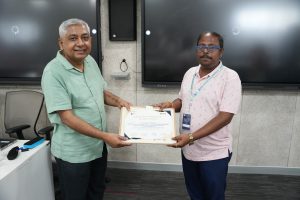 In an era when Artificial Intelligence is growing in popularity, the Department of Computer Science and Engineering decided to leverage its possibilities and expand the scope of its application across the Healthcare sector. The five-day workshop titled Revolutionising Health Care with AI: Computer Biology and Computer, sponsored by DST-ANRF, was one such event.
In an era when Artificial Intelligence is growing in popularity, the Department of Computer Science and Engineering decided to leverage its possibilities and expand the scope of its application across the Healthcare sector. The five-day workshop titled Revolutionising Health Care with AI: Computer Biology and Computer, sponsored by DST-ANRF, was one such event.
The five-day workshop explored the revolutionary potential of AI Technologies in medical diagnostics with special emphasis on the areas of Computational biology. The workshop also focused on areas of Computational Biology and Computer Vision to improve healthcare by enhancing clinical decision making and enabling personalised healthcare treatments and diagnosis.
The workshop saw the participation of academicians, research scientists and industrial experts from the fields of computer sciences, biology and data science. The workshop aimed to facilitate discussions on effectively combining computational techniques with biological research.
The workshop, apart from facilitating cross-disciplinary discussion and knowledge sharing, also laid emphasis on revisiting foundational concepts nd advancements in the areas of computer vision and machine learning. They further explored the practical implications of these concepts. The workshop also offered hands-on training opportunities to give the attendees a clear understanding of the concept and delving into areas like AI and Multiomics Data.
The participants also had the opportunity to engage in brainstorming discussions, explore innovative methods that significantly contribute to healthcare improvement, and use algorithms to enable early detection of disease. Among the notable speakers who spoke at the workshop were Prof. (Dr) Lars Kaderali from the university of University of Cologne; Dr Suvendu Rup from NIT Raipur, Prof. (Dr) Amlan Chakrabarti from the A K Choudhury School of Information Technology at the University of Calcutta and an Adjunct Professor at IIIT Delhi and Prof. (Dr) Ram Bilas Pachori among others. Their insights and expertise offered participants a thought-provoking five-day workshop that would meaningfully benefit the field of Healthcare, paving the way for innovative tools and methods that will enhance patient care.
- Published in CSE NEWS, Departmental News, News
Dr Mrinmoy Pramanick’s Guest Talk on Bengali Dalit Literature
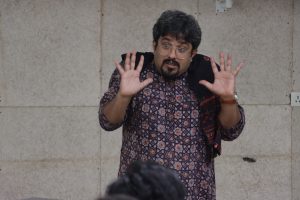 The Department of Literature and Languages at SRM University-AP organised a thought-provoking guest talk titled “Caste of Partition: Understanding Bengali Dalit Literature” on April 02, 2025. The event featured Dr Mrinmoy Pramanick, a distinguished scholar, Sahitya Akademi Award winner (2023), and Assistant Professor at the Department of Comparative Indian Language and Literature, University of Calcutta.
The Department of Literature and Languages at SRM University-AP organised a thought-provoking guest talk titled “Caste of Partition: Understanding Bengali Dalit Literature” on April 02, 2025. The event featured Dr Mrinmoy Pramanick, a distinguished scholar, Sahitya Akademi Award winner (2023), and Assistant Professor at the Department of Comparative Indian Language and Literature, University of Calcutta.
Dr Pramanick delivered an insightful lecture examining the complex relationship between caste, Partition, and Bengali Dalit literature. He quoted the historical trajectory of Partition, the Bangladesh Liberation War of 1971, which had a profound impact on Bengali Dalits, who faced displacement and marginalisation. He highlighted how Dalit experiences of Partition differ significantly from mainstream narratives. In his own words, “Dalit literature gave a new dimension to Bengali Partition History.”
The lecture also explored the representation of Partition in Bengali Dalit literature, focusing on notable works such as Sroter Sange by Narayan Gangopadhyay, Kundika by Samaresh Doshu, and Sokal Belar Alo by Shankar Mahadevan. Dr Pramanick emphasised how these literary works illuminate the challenges faced by Dalit refugees, including economic struggles, social discrimination, and identity crises. He also examined the influence of Ambedkarite ideologies in Bengali literature, especially in educational reforms, the establishment of institutions bearing Ambedkar’s name, and the translation and publication of his writings in Bengali. Dr Pramanick’s discussion underscored the transformative power of Dalit literature, stating, “It made history inclusive and for all.”
The session concluded with a highly engaging Q&A segment, where students, faculty members, and researchers actively participated. The discussion covered the role of caste consciousness in literary narratives, the socio-political impact of migration, gender roles, and the integration of Dalit literature into contemporary academia. Dr Pramanick’s responses offered deeper insights into marginalised perspectives on Partition and the significance of inclusive historical discourse.
Dr Mrinmoy Pramanick’s guest lecture was an intellectually enriching experience that provided a new perspective on the study of Partition through the lens of Bengali Dalit literature. The event successfully fulfilled its objective of fostering academic dialogue and promoting critical engagement with the socio-cultural dimensions of Partition and caste.
- Published in Departmental News, English news, News
CSE Professors Research on Automated Agricultural Spraying
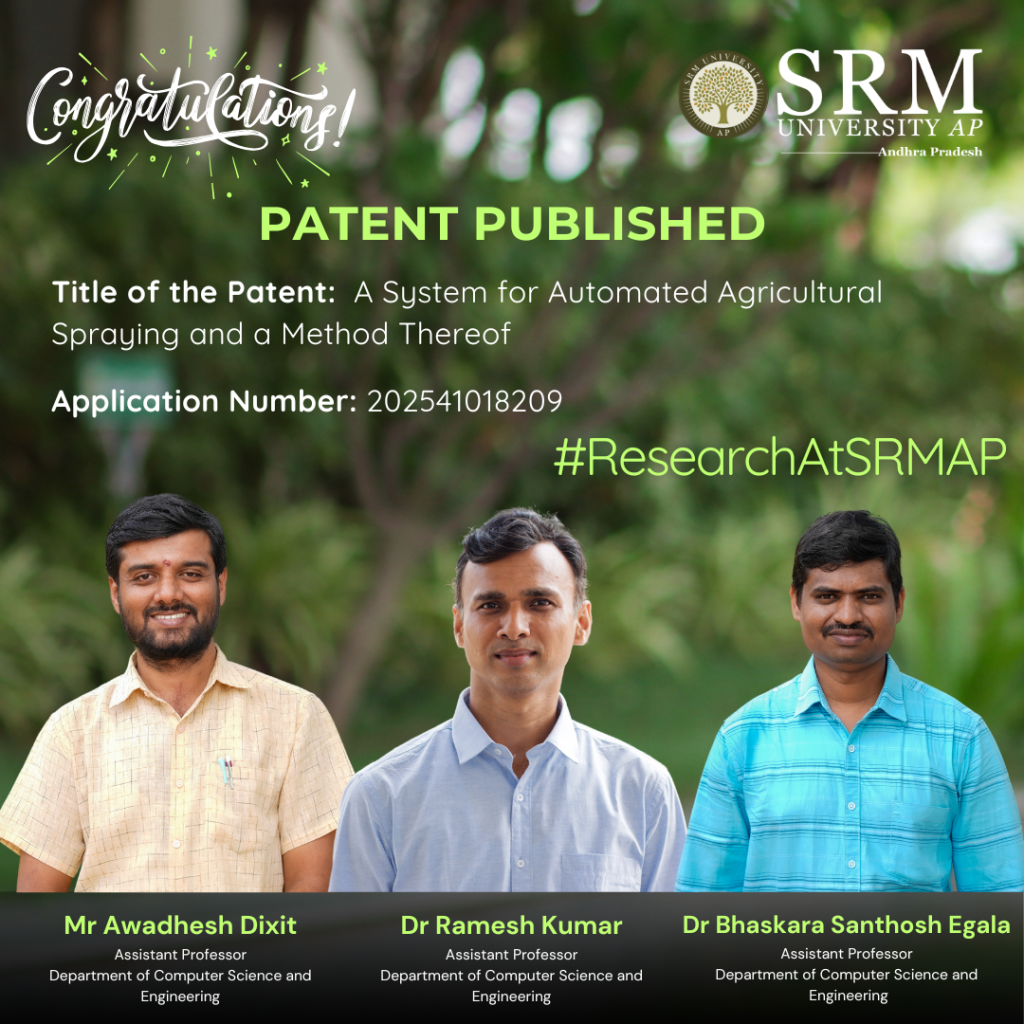 This research, titled “A System for Automated Agricultural Spraying and a Method Thereof,” focuses on developing a coordinated multi-UAV framework for precision agricultural spraying. Led by Dr Awadhesh Dixit and his faculty team, Dr Ramesh Kumar, and Dr Bhaskara Santosh Egala, Assistant Professors at the Department of Computer Science and Engineering, this innovative research enhances efficiency in crop management by utilising advanced technologies for real-time data integration and optimisation.
This research, titled “A System for Automated Agricultural Spraying and a Method Thereof,” focuses on developing a coordinated multi-UAV framework for precision agricultural spraying. Led by Dr Awadhesh Dixit and his faculty team, Dr Ramesh Kumar, and Dr Bhaskara Santosh Egala, Assistant Professors at the Department of Computer Science and Engineering, this innovative research enhances efficiency in crop management by utilising advanced technologies for real-time data integration and optimisation.
Abstract
This invention presents a novel system and process for precision agricultural spraying using a coordinated multi-UAV (Unmanned Aerial Vehicle) framework. The system integrates multiple UAVs equipped with sensors (e.g., LiDAR, ultrasonic) and spraying mechanisms, managed by a central control unit employing hybrid approach combining PSO, Fuzzy Logic, and Reinforcement Learning (RL) for efficient real-time multi-UAV coordination. The hybrid system dynamically adapts to environmental conditions, ensuring optimal path planning, collision avoidance, and spray adjustments. The process involves real-time data collection on crop density, environmental conditions, and obstacles, enabling dynamic flight path planning and adaptive spray rate adjustments. Key innovations include the use of advanced control software for UAV coordination, obstacle avoidance, and uniform pesticide application, combined with hardware featuring adjustable spraying devices. This approach enhances efficiency, reduces collision risks, and ensures precise coverage in complex agricultural environments, distinguishing it from prior UAV-based spraying systems through its sophisticated integration of real-time optimization and multi-UAV collaboration.
Explanation in layperson’s terms
Imagine a team of small flying robots (drones) working together to spray crops on a farm. First, they use their cameras and sensors to check the fields, figure out where the bugs or weeds are, and spot anything in the way, like trees or fences. Then, they plan the best paths to fly so they don’t crash and can cover everything evenly. Each drone has a sprayer that can change how much it sprays depending on what the crops need—like giving extra spray where there are more bugs. A smart computer program helps them talk to each other and decide what to do as they go. This makes farming easier, faster, and wastes less spray compared to older ways.
We have created a way to use drones to spray crops with bug-killing chemicals more smartly. One drone checks the fields first to spot where the bugs are worst. Then, other drones with special sprayers fly over and target those spots, spraying two rows at once to save time. If they find a really buggy area, they hover there longer to make sure it’s fully covered. The drones communicate and coordinate to each other and dodge trees or other obstacles, so farmers don’t have to do it all by hand.
The hybrid system operates by continuously integrating PSO, Fuzzy Logic, and RL during UAV operations to achieve optimal coordination and performance. First, one part of the system—think of it like a master planner—figures out the best paths for the drones to fly based on what the farm looks like, like where the crops are and what’s in their way. Then, another part acts like a quick fixer—it tweaks those paths on the fly if something unexpected pops up, like thicker crops or a tree the drones didn’t see at first. It also adjusts how much spray the drones use so they don’t overdo it. Finally, there’s a learning part that helps the drones get better over time—like they remember what worked before and adapt to changes, such as growing plants or windy days. Together, this makes the drones super-efficient: they don’t bump into each other, they spray just the right amount, and they keep figuring out the best way to handle whatever the farm throws at them—all on their own.
Practical Implementation of the Research
A. Test Environment and UAVs
Field Setup:
Location: A 100-acre test field with varying crop densities (rice, wheat, and maize) and obstacles such as trees, irrigation systems, and terrain elevations.
Environmental Conditions: Tested under different weather conditions (sunny, windy, and overcast).
UAV Model:
Five multi-rotor UAVs equipped with spraying equipment, GPS, LIDAR sensors for obstacle detection, and onboard processing units to run the hybrid optimization algorithms.
Battery Life: 30-minute flight time with a 5kg payload capacity.
Communication: UAVs communicate via a wireless mesh network with a ground control system for real-time adjustments.
Each drone would also have a dual-spray setup—two adjustable nozzles attached to a tank holding pesticide or fertilizer, capable of spraying two rows of crops at once.
B. Hybrid Optimisation Algorithm
PSO for Path Planning:
Determines the optimal flight path based on crop density, UAV location, and environmental data.
Fuzzy Logic for Spray Adjustment:
Dynamically adjusts the spray level based on crop health data, wind speed, and UAV altitude.
Reinforcement Learning for Collision Avoidance:
UAVs learn from previous flight paths and environmental feedback to avoid collisions with other UAVs and obstacles.
Future Research Plans
Their future research focuses on developing swarm-based D2X communication and coordination, task rescheduling, localization, and optimized path planning to enhance UAV network performance, prevent collisions, and advance AI-related applications.
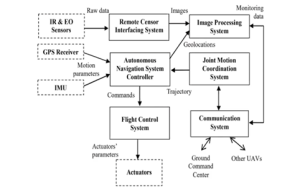
Figure 1: Block diagram of Multi-UAV Coordination path planning and coordination among multiple UAVs in an agricultural field.

Figure 2: Diagram illustrating drone spraying in agriculture field with obstacle avoidance
- Published in CSE NEWS, Departmental News, News, Research News


